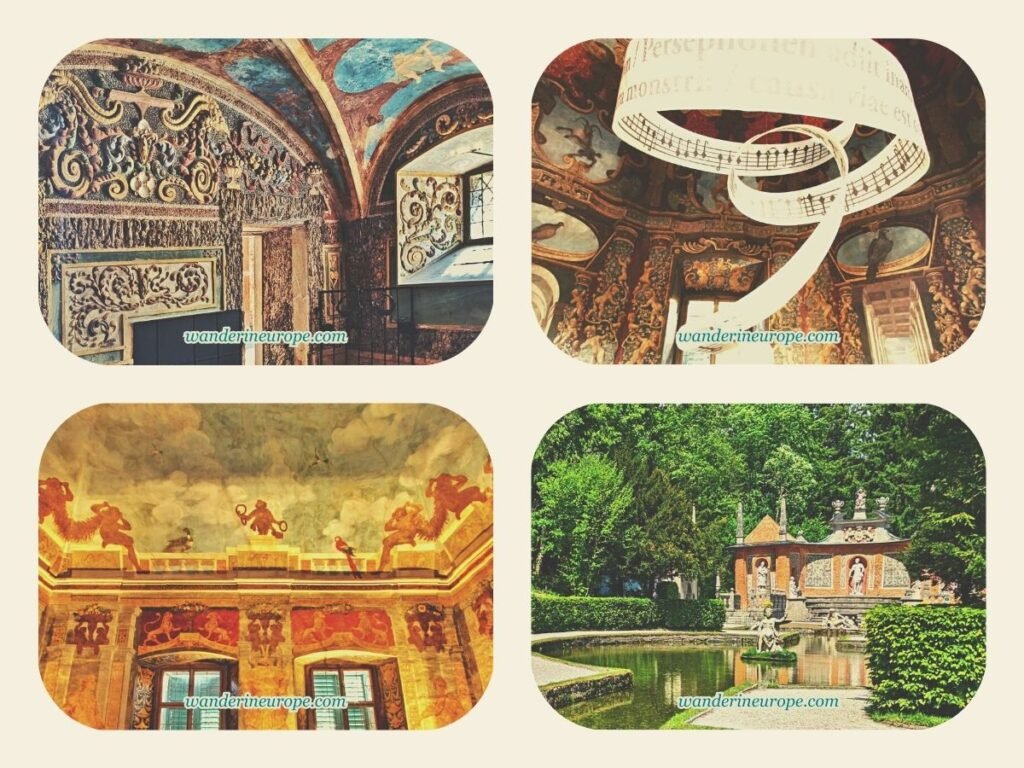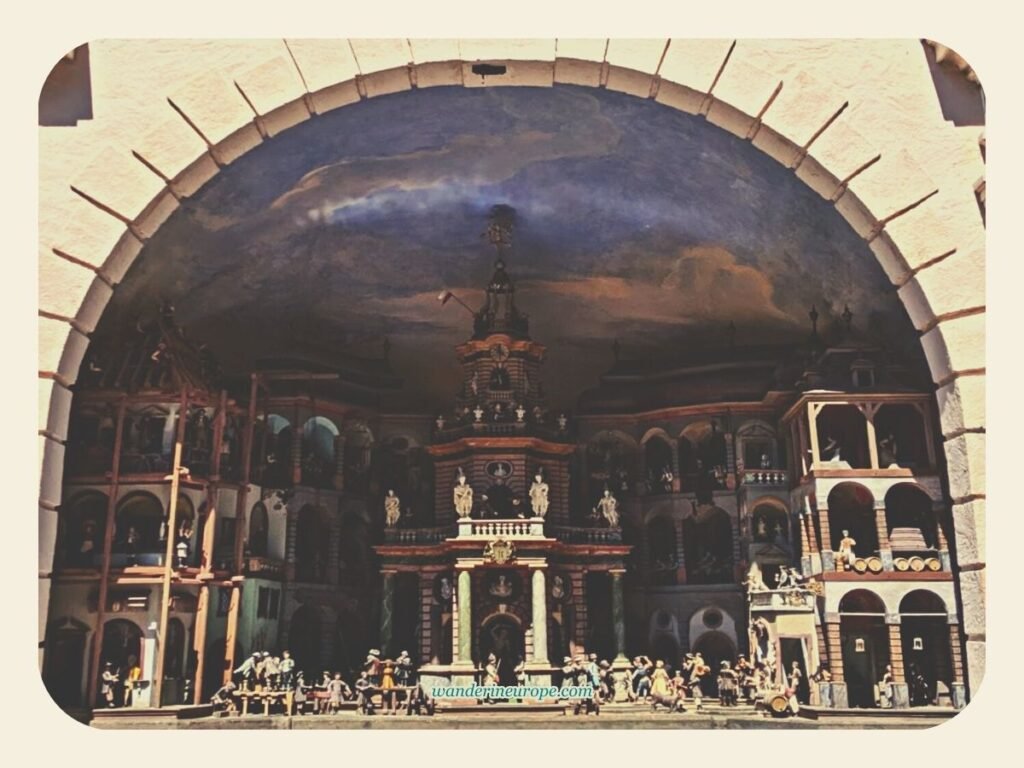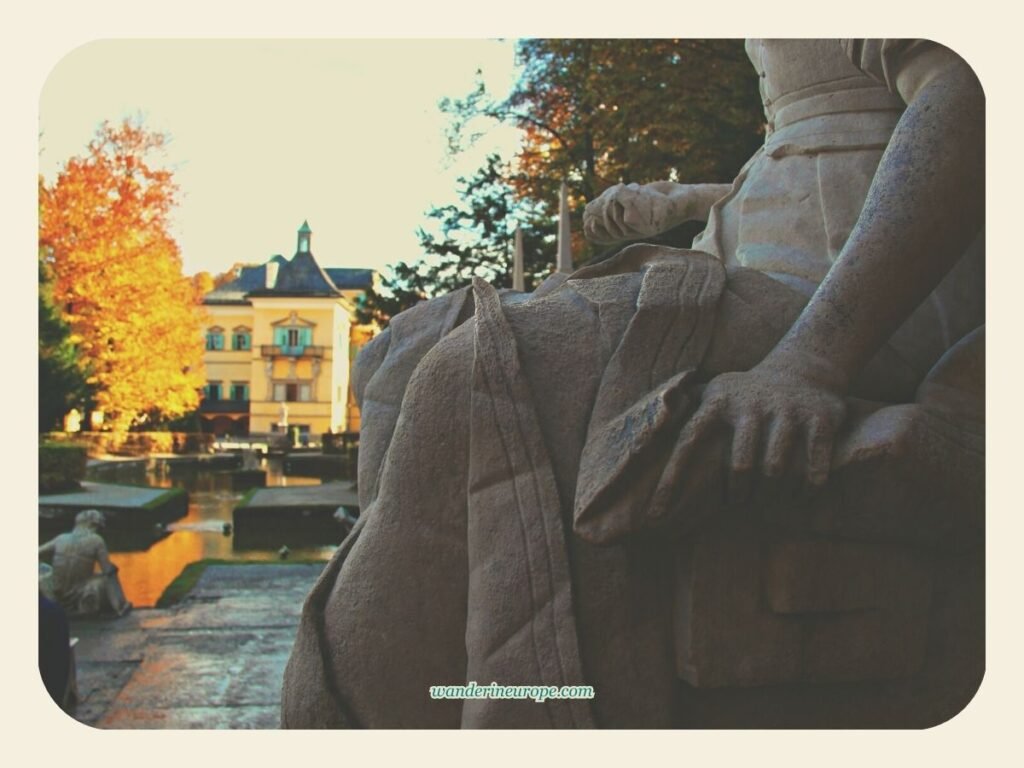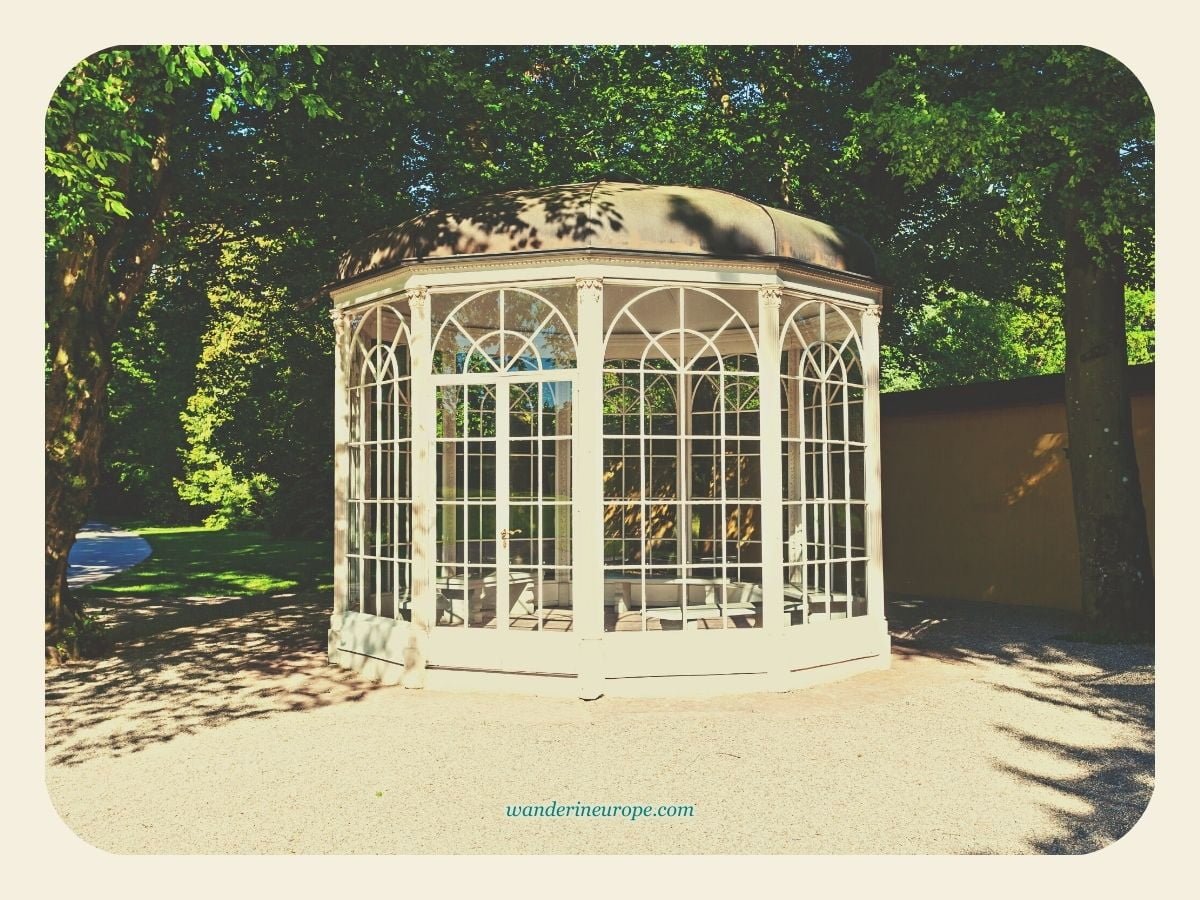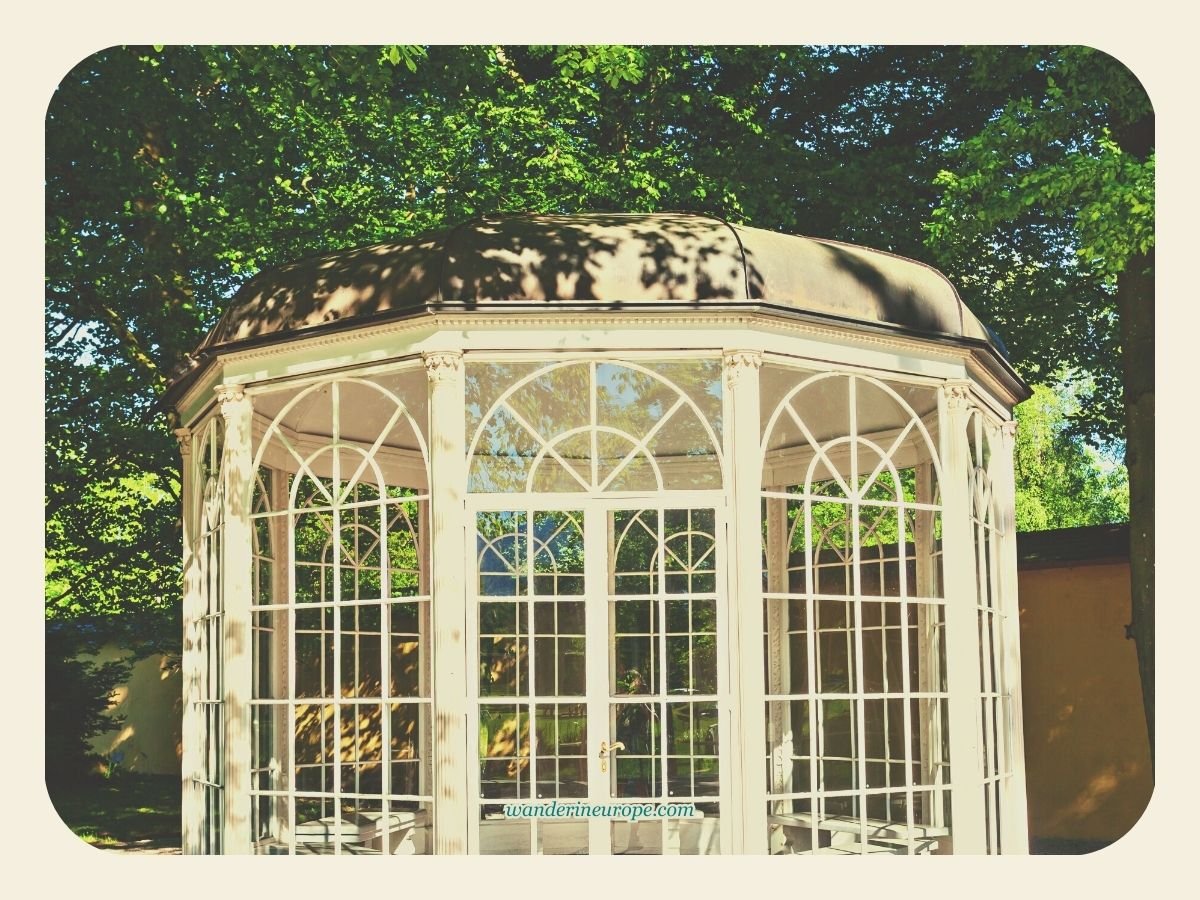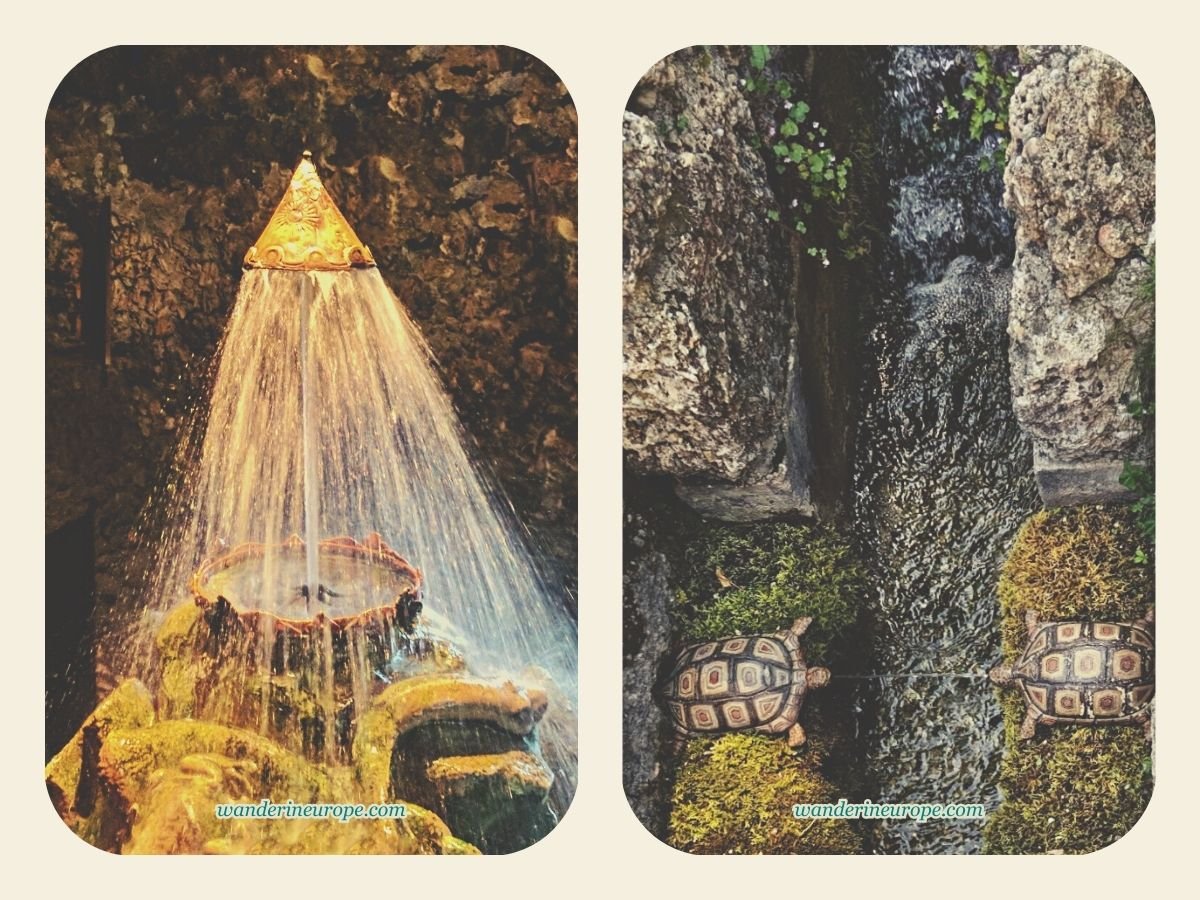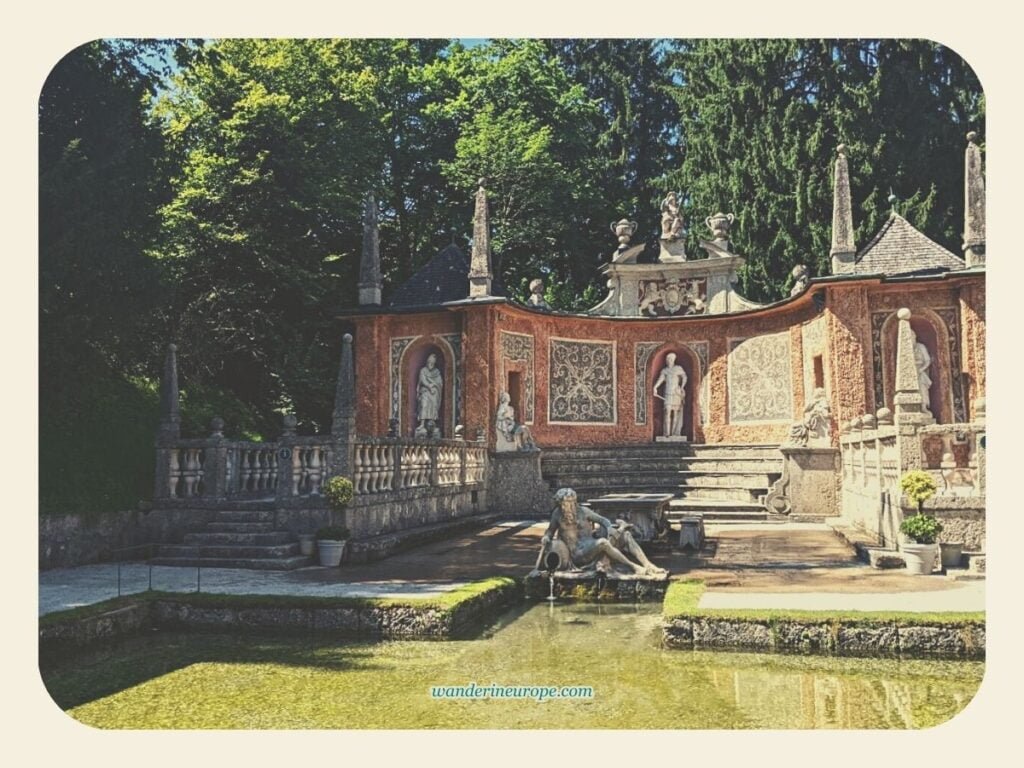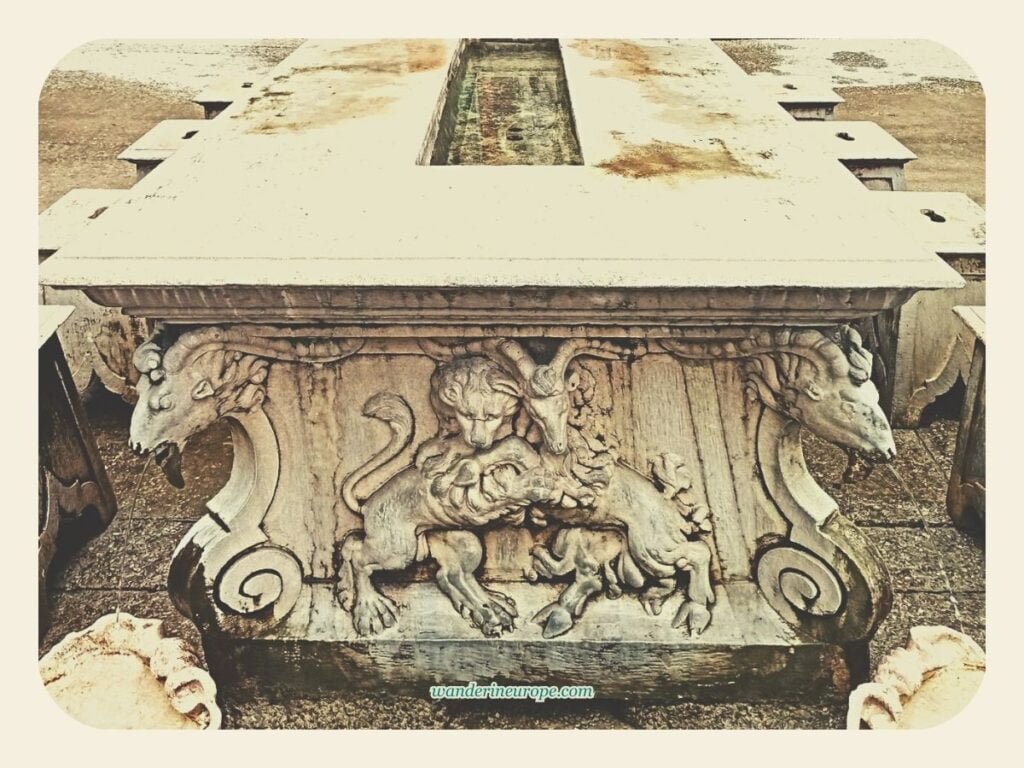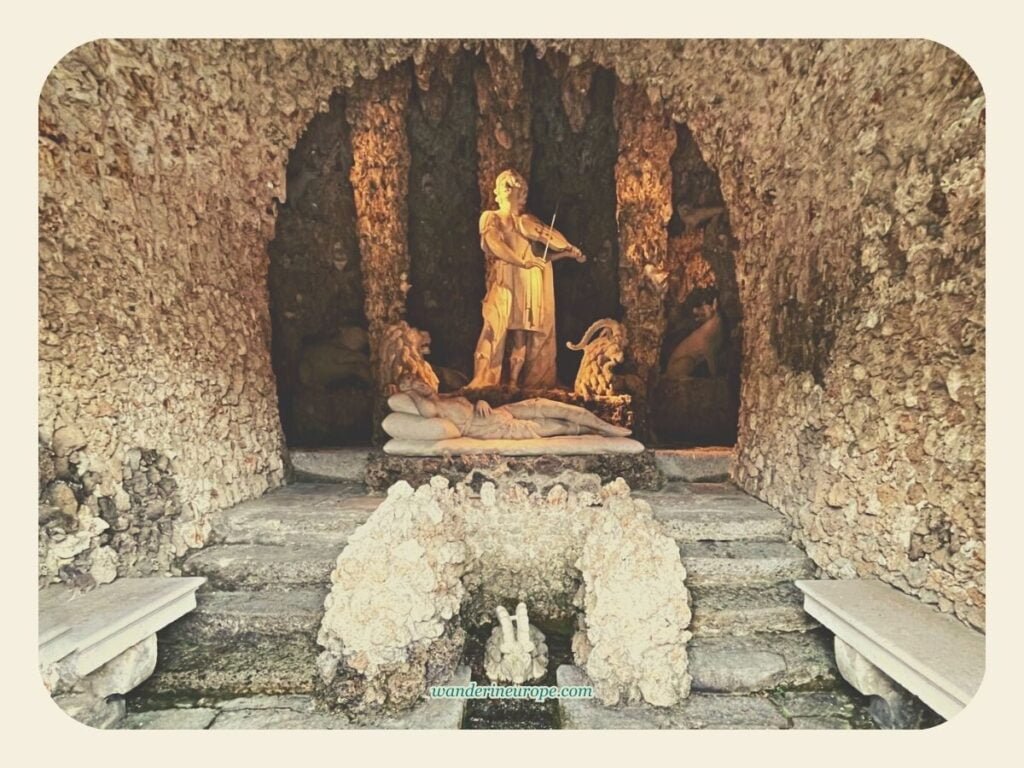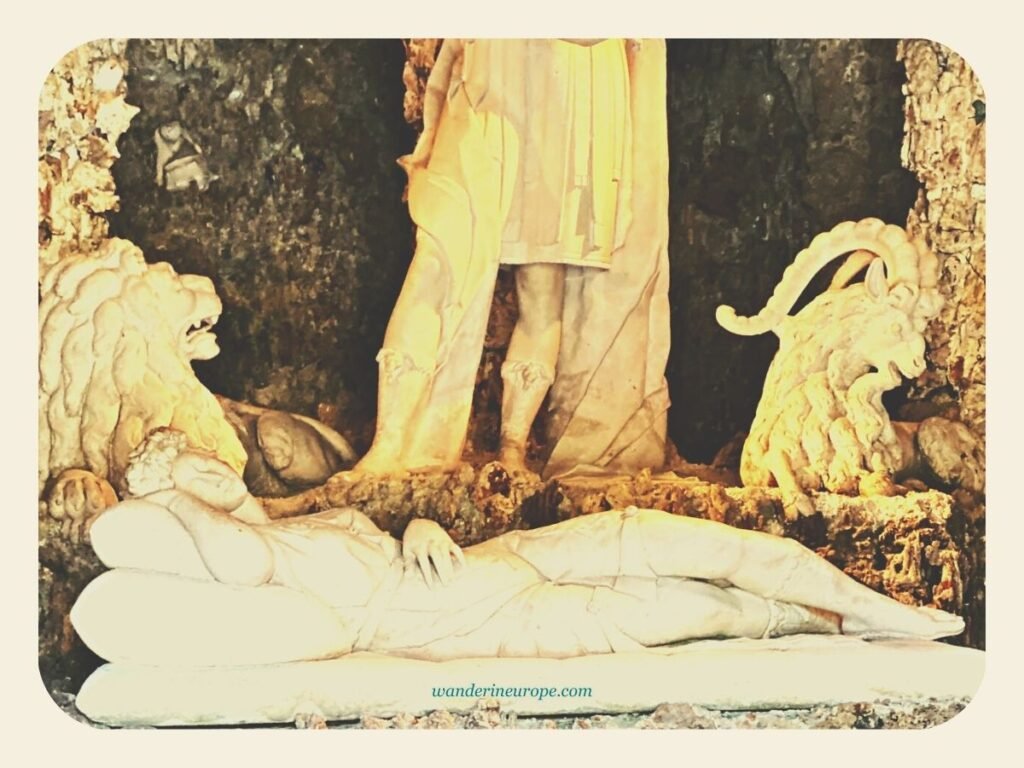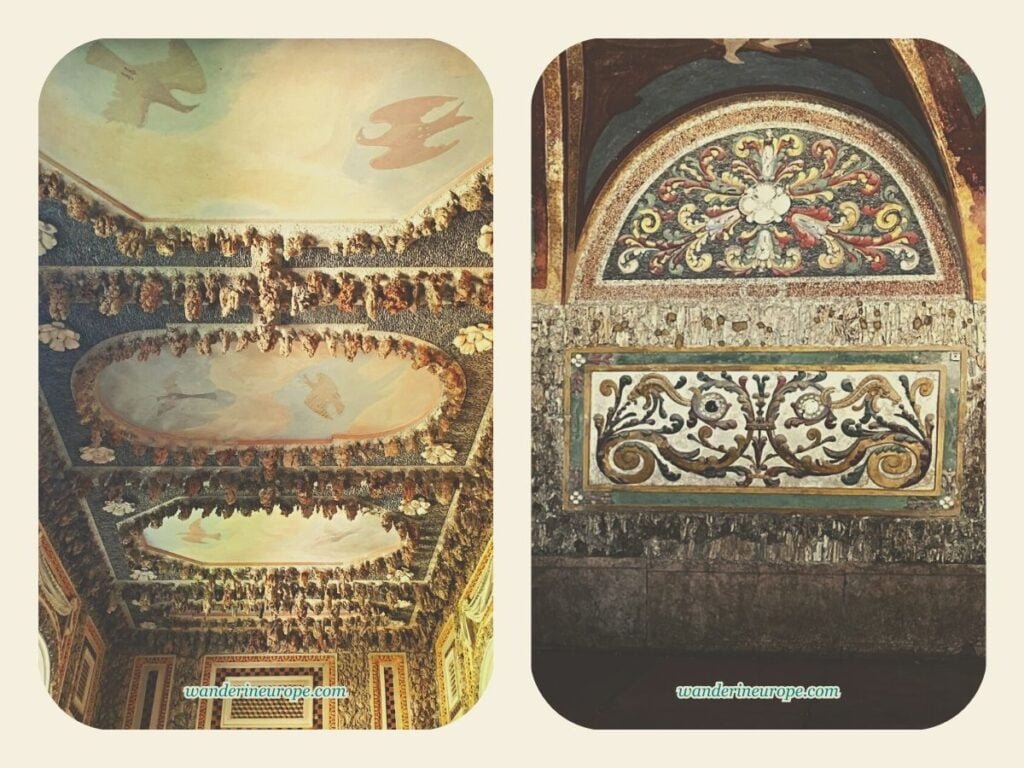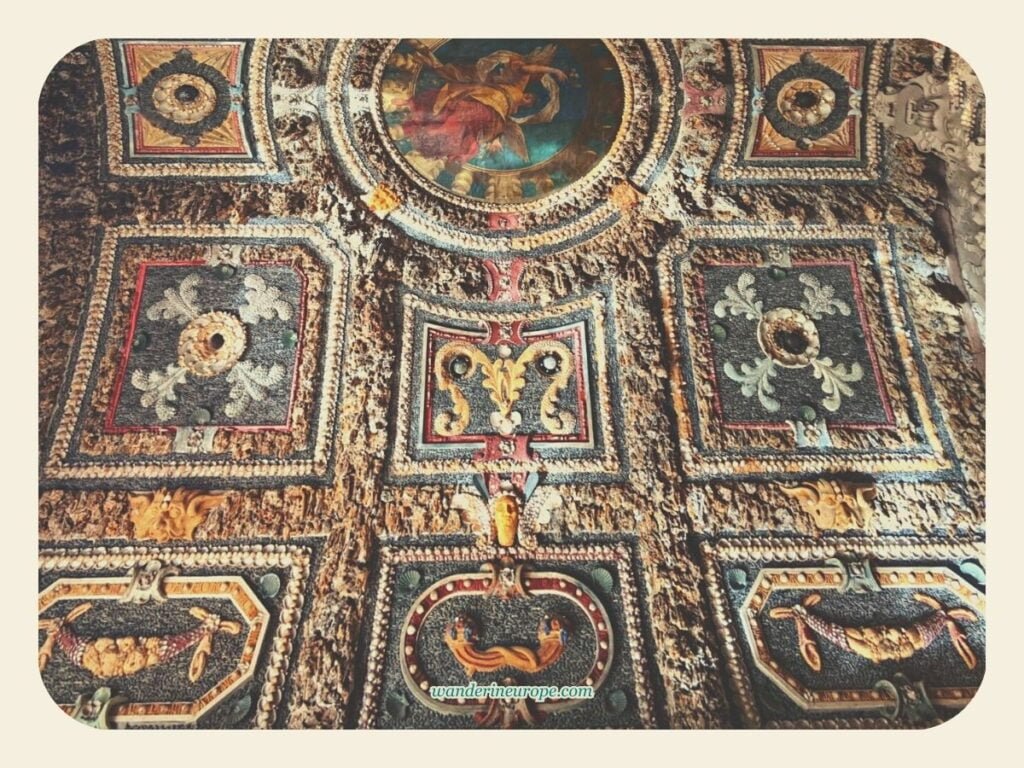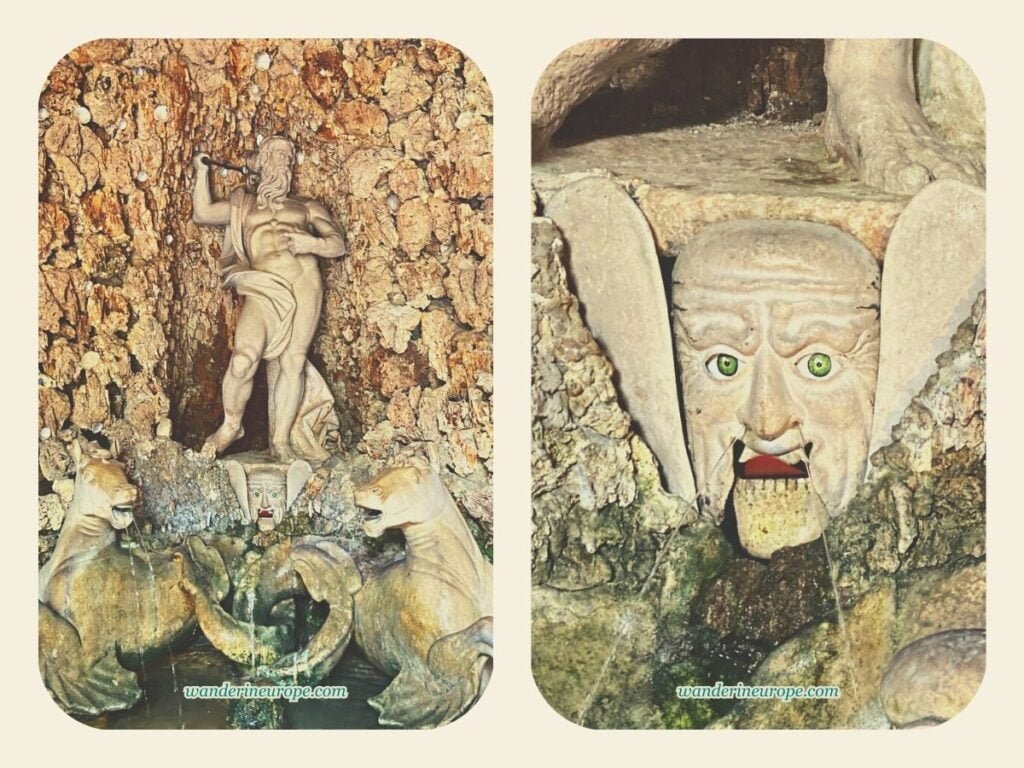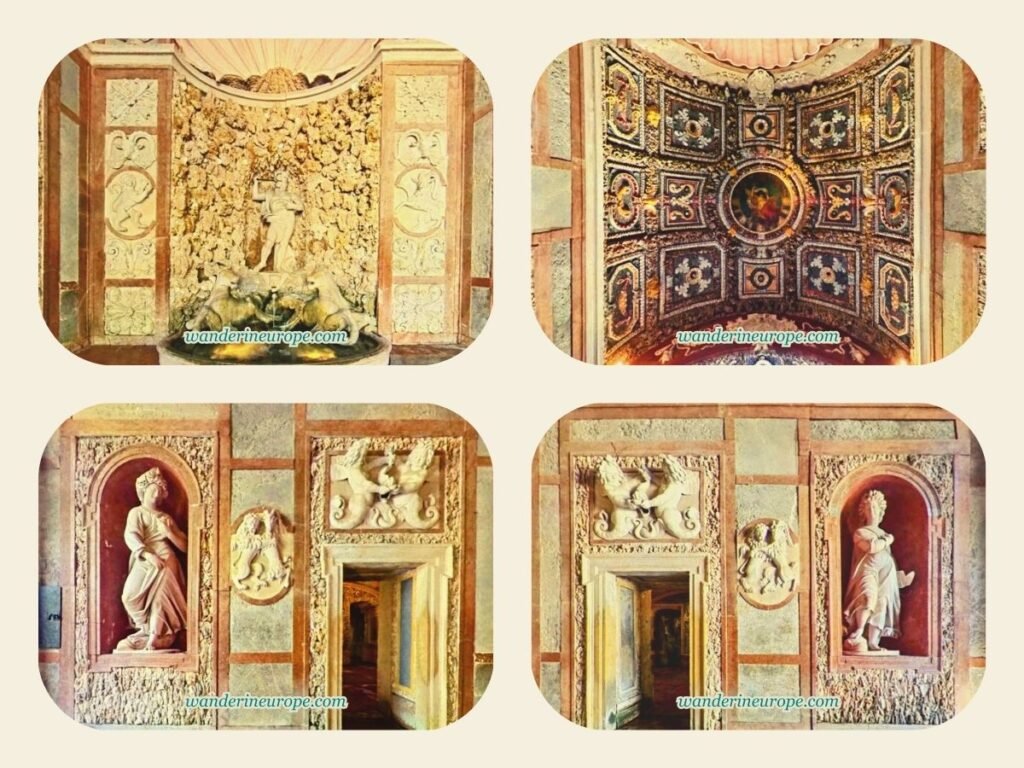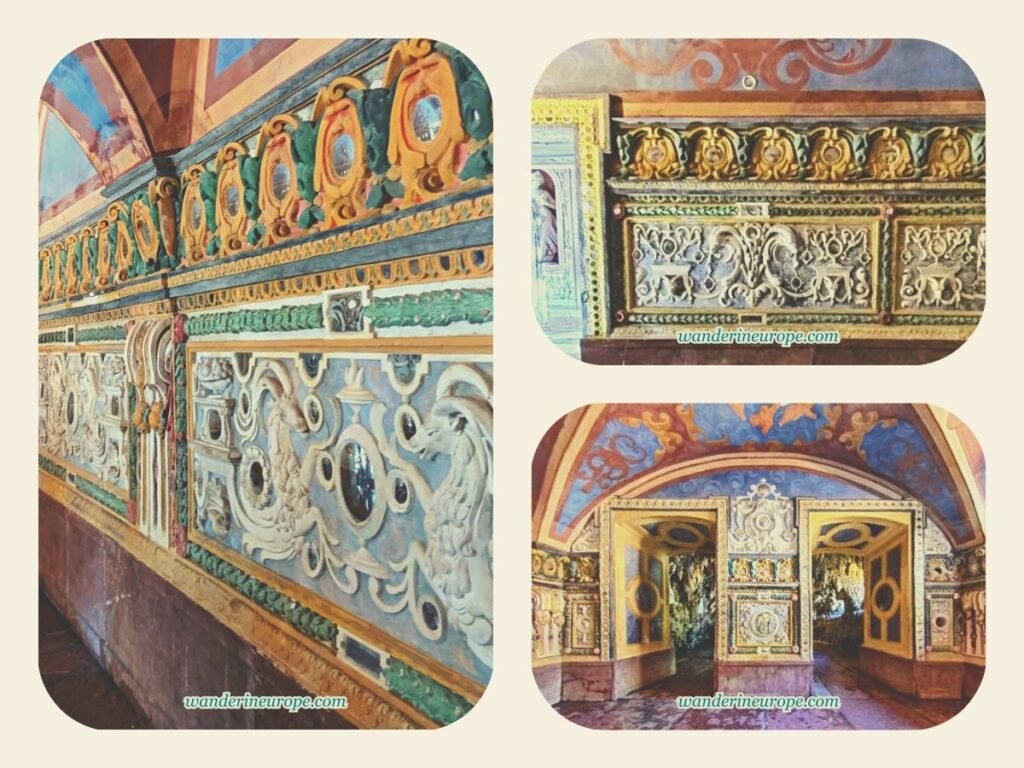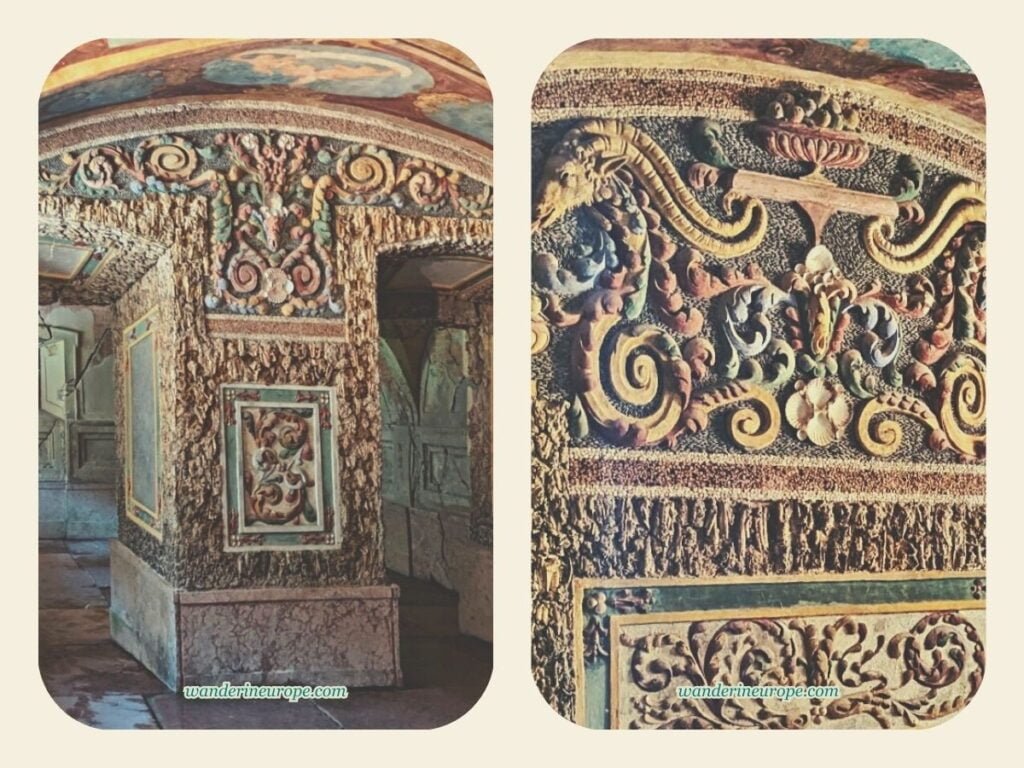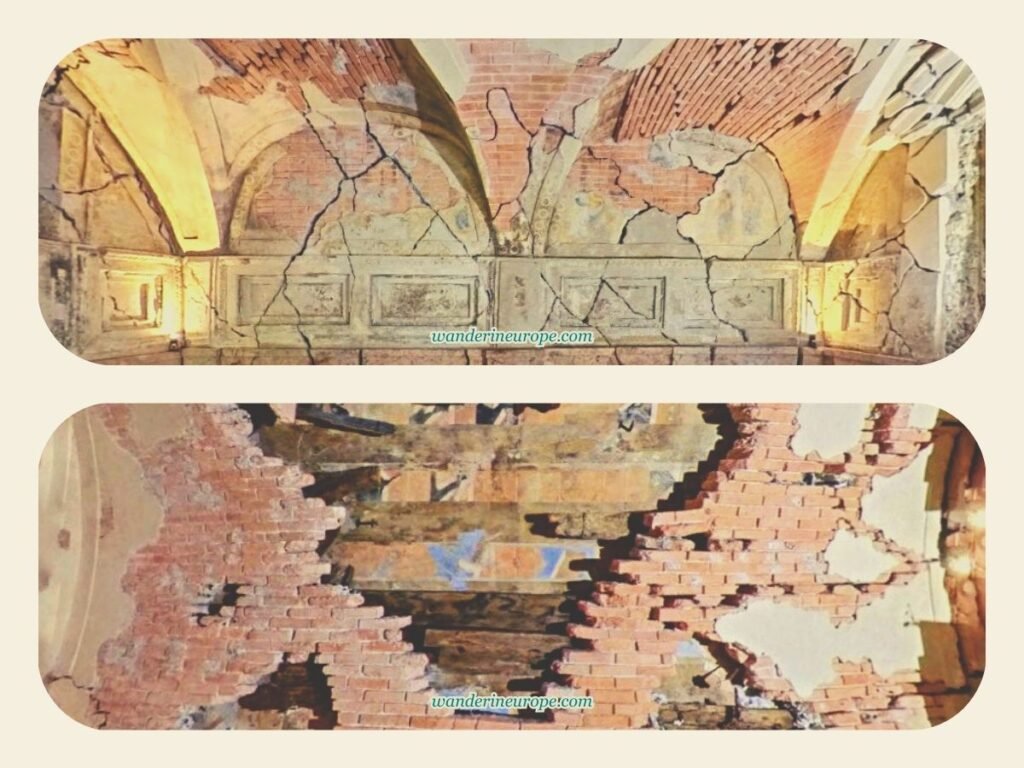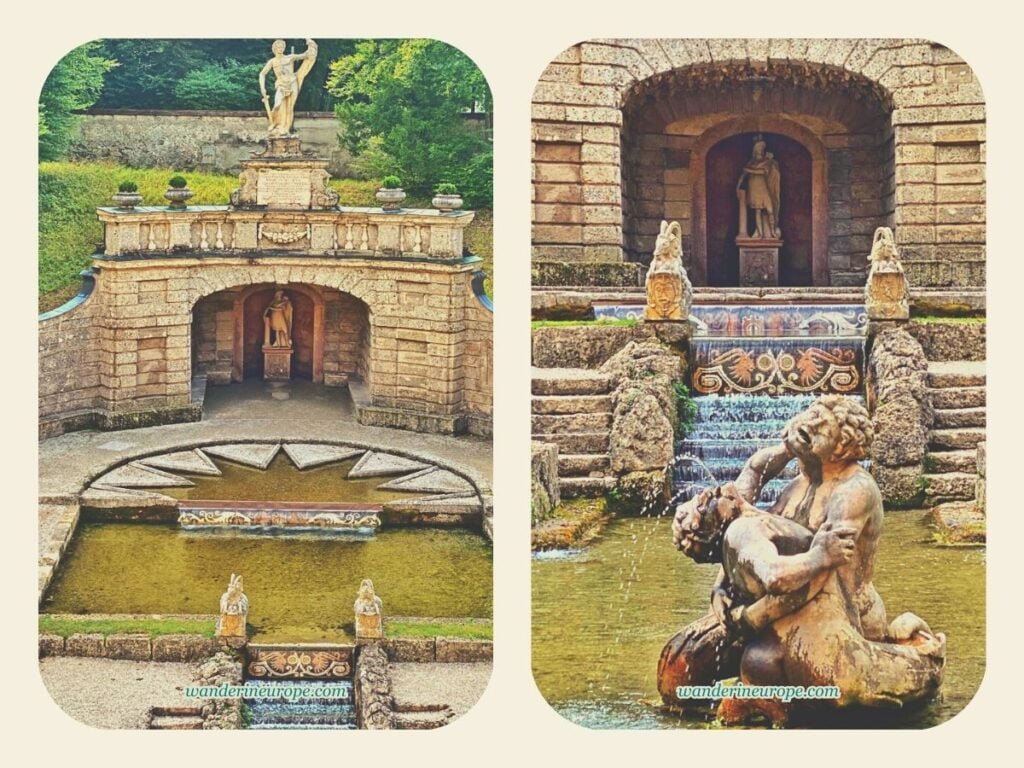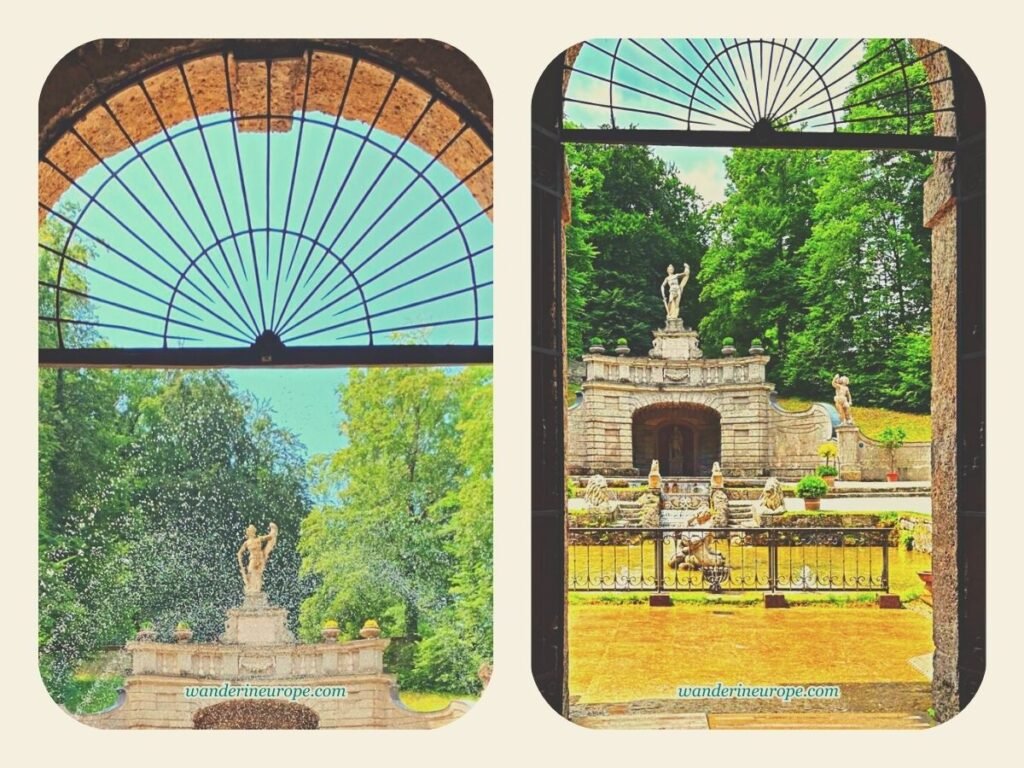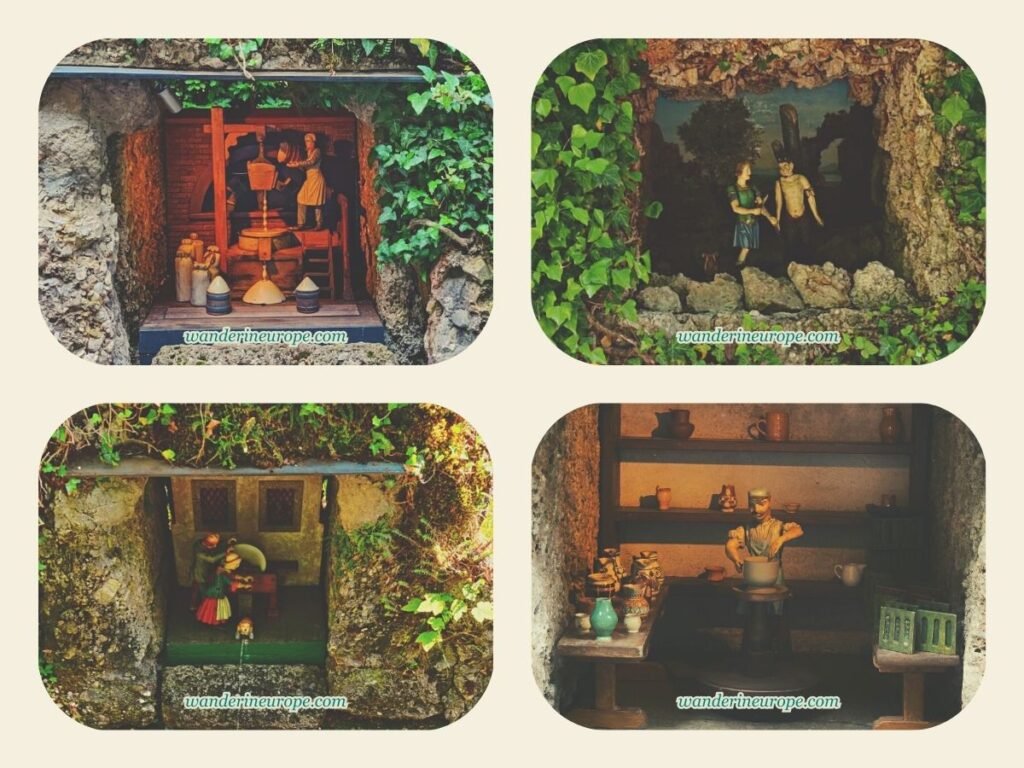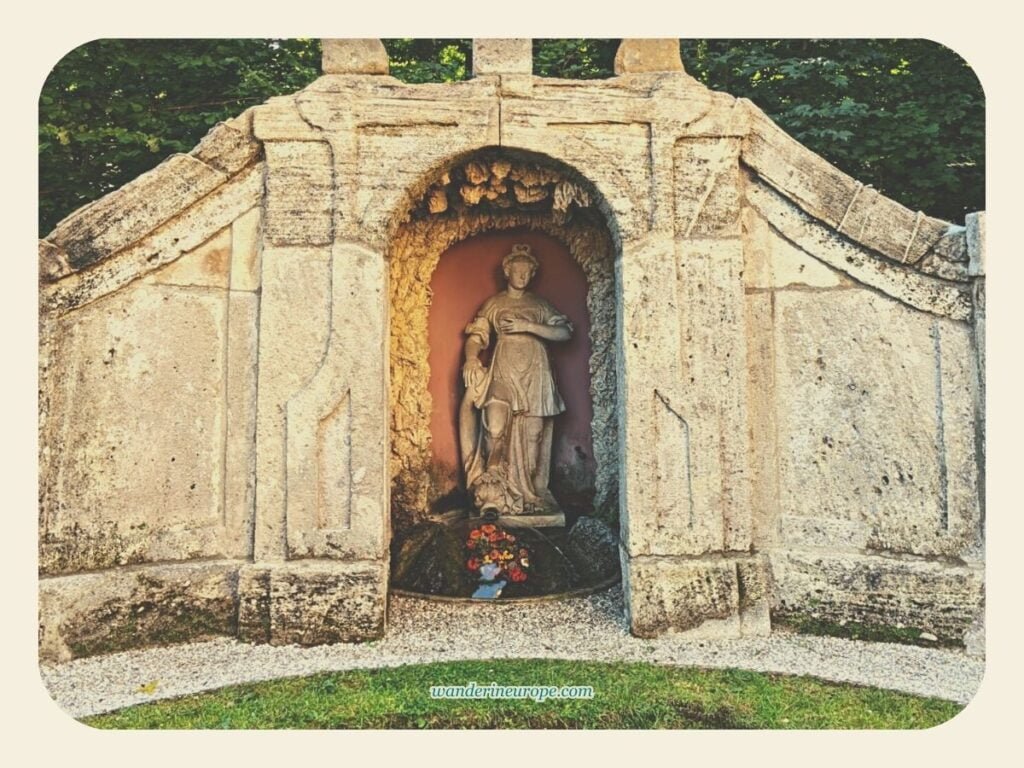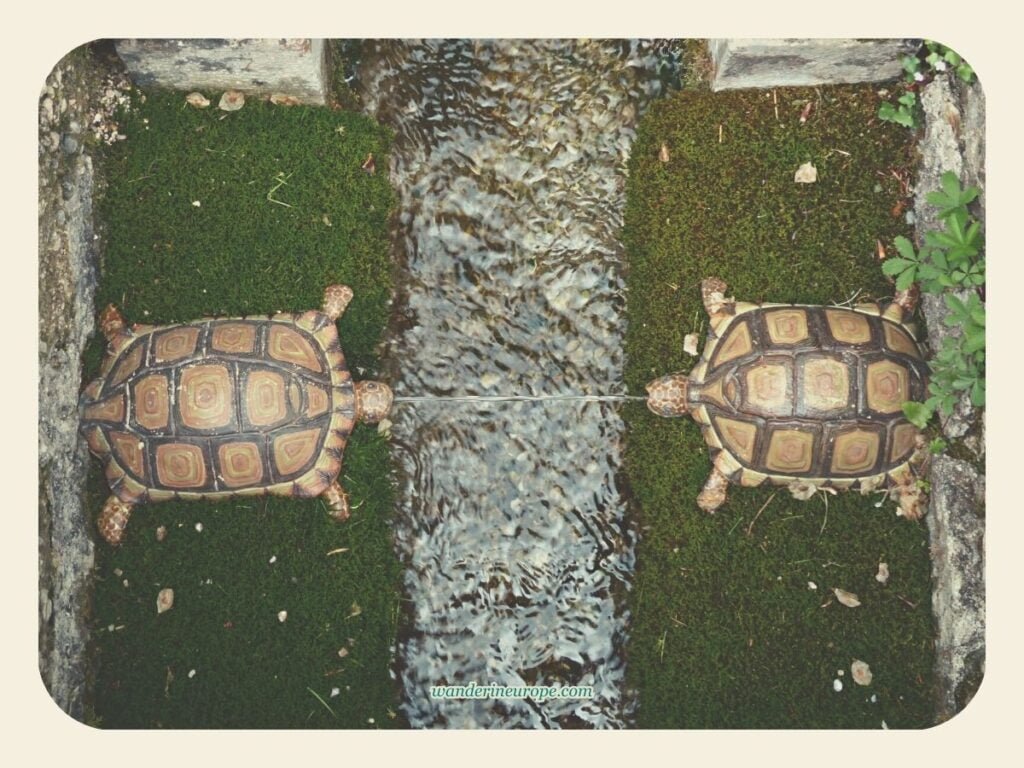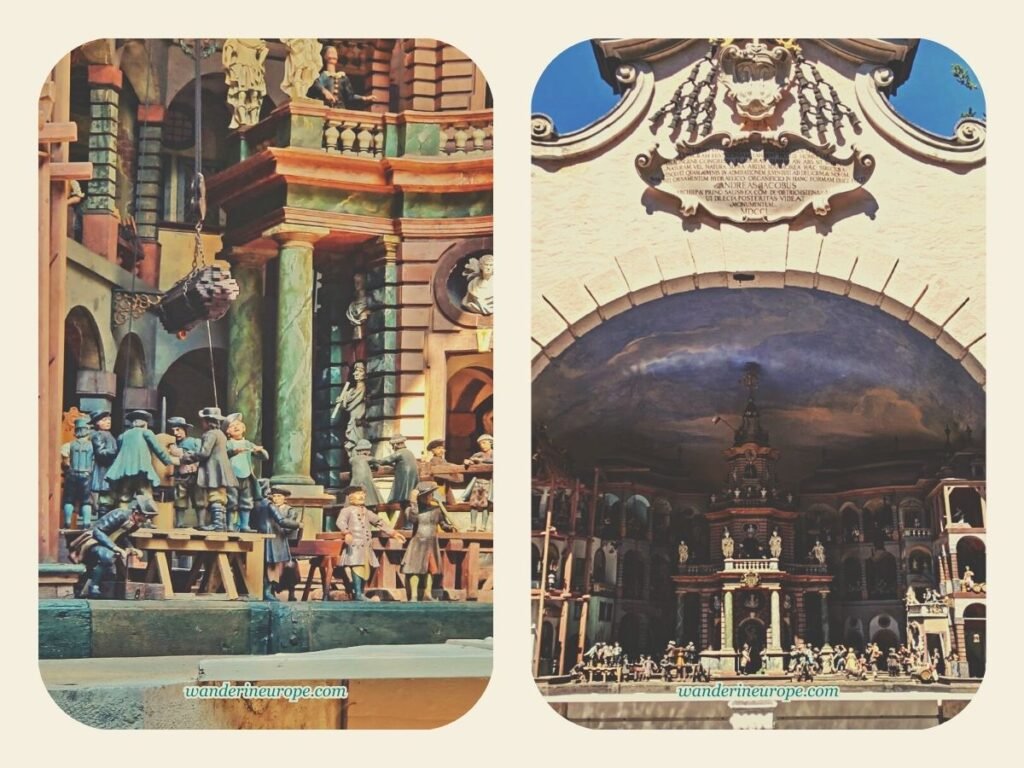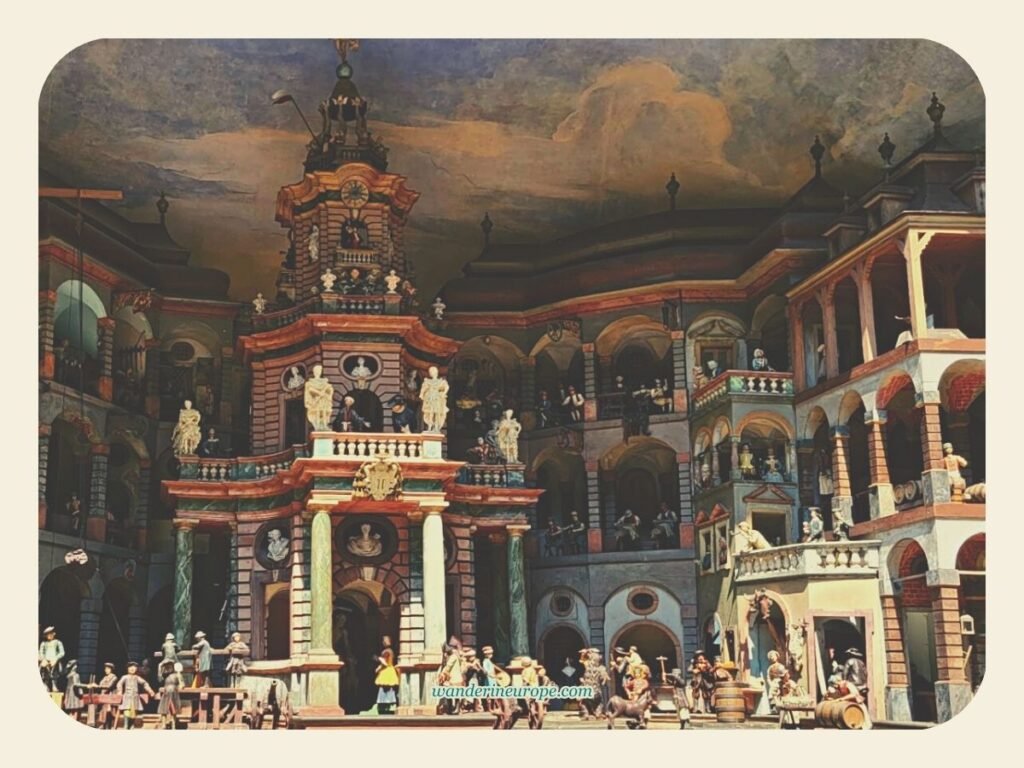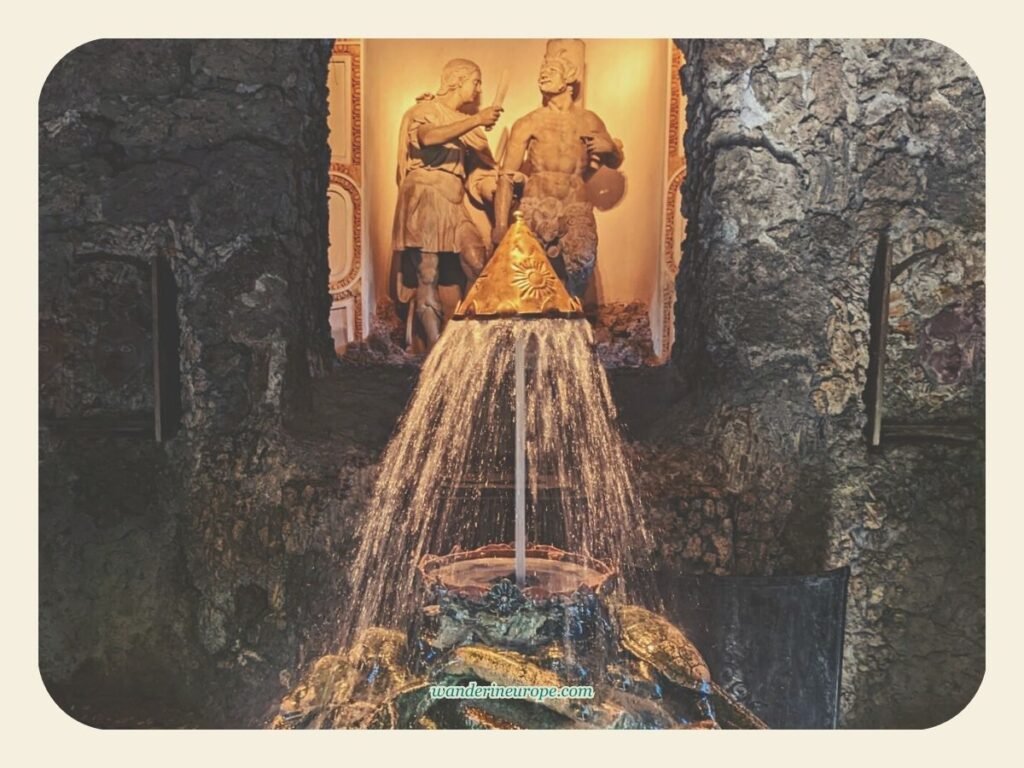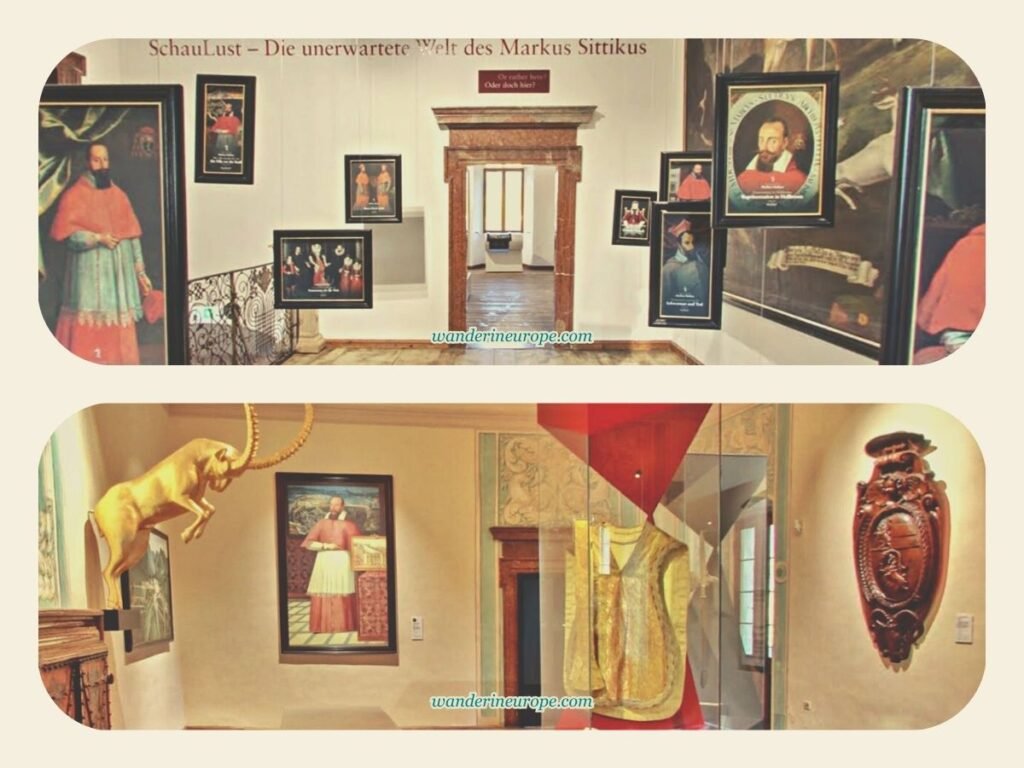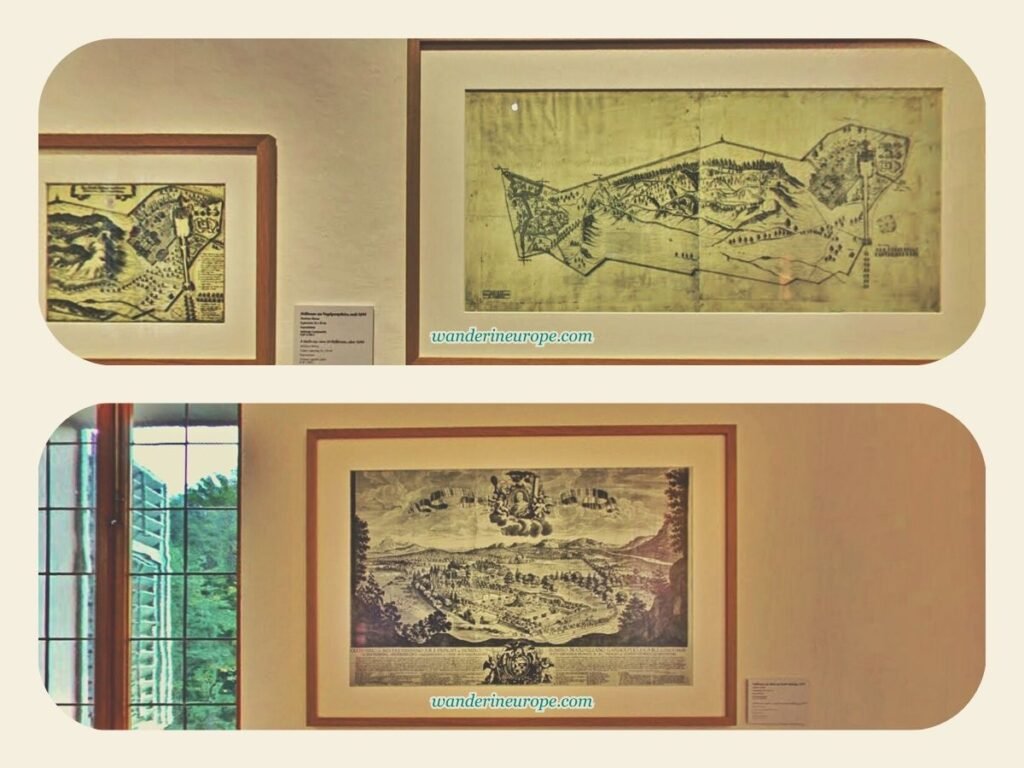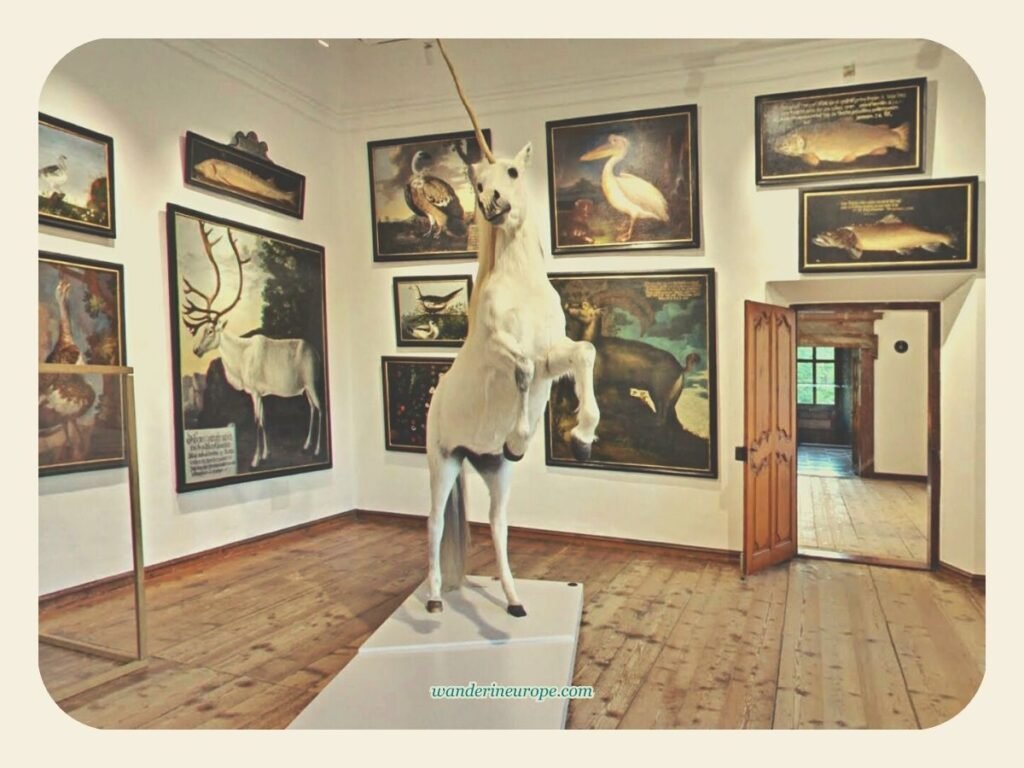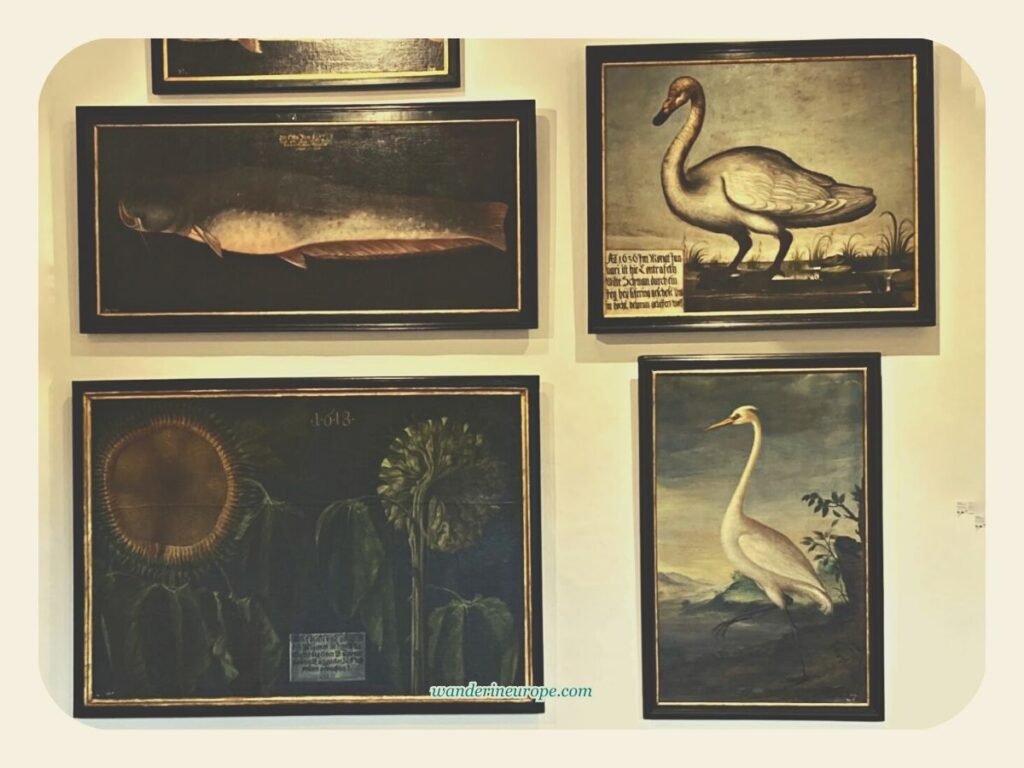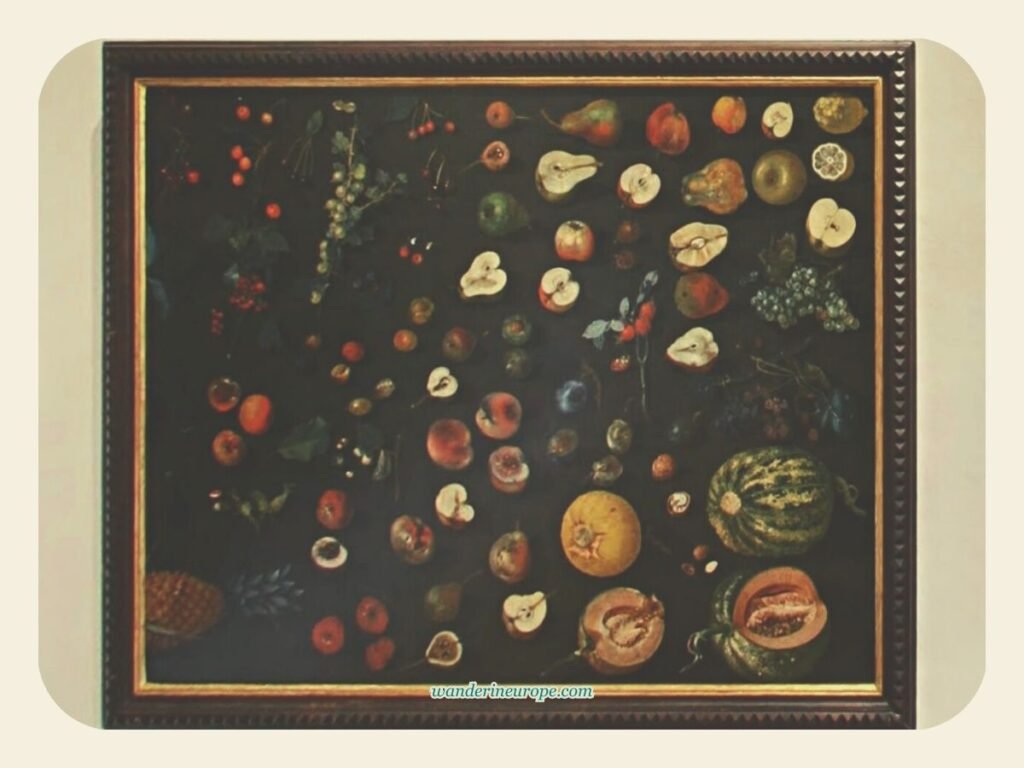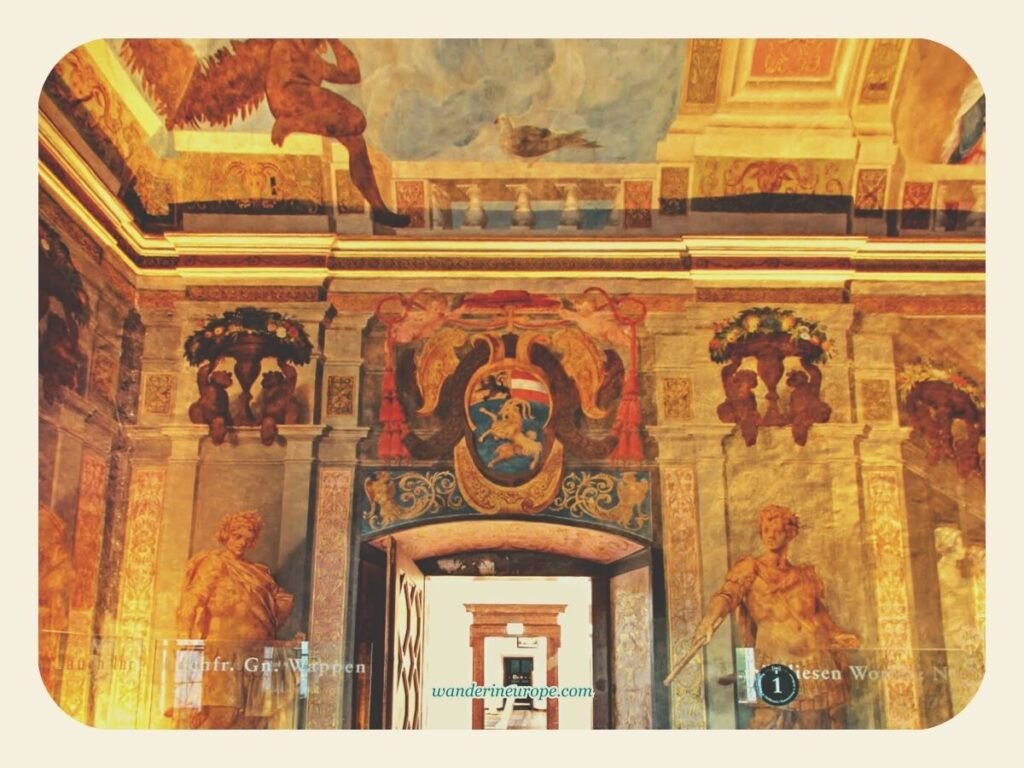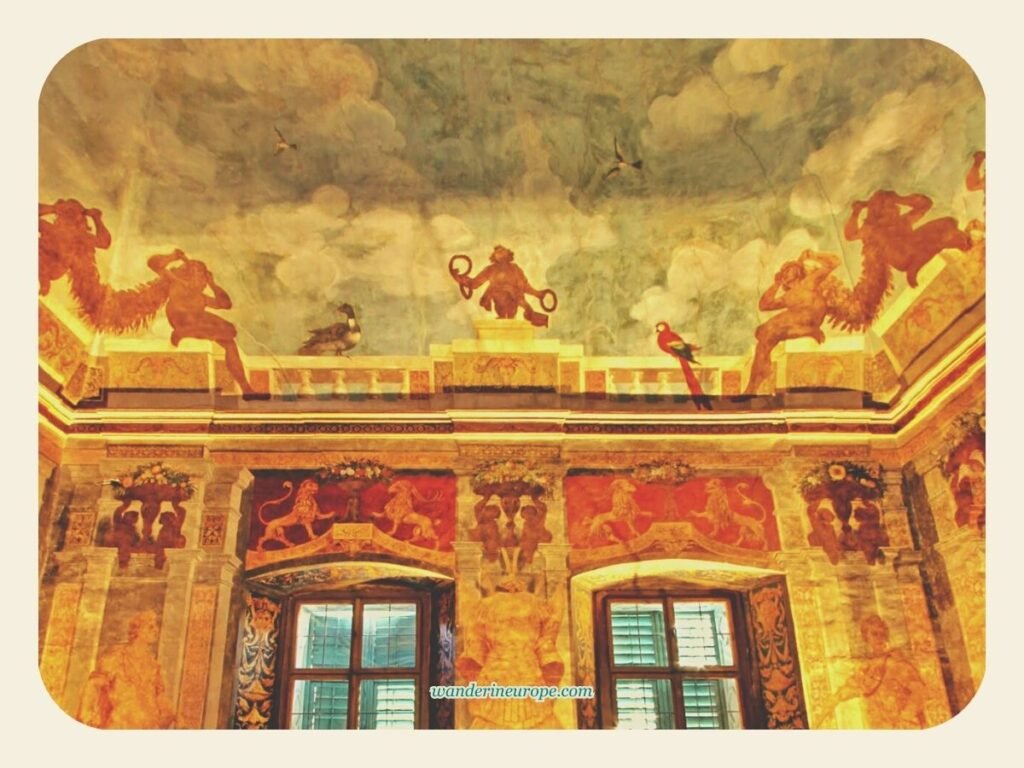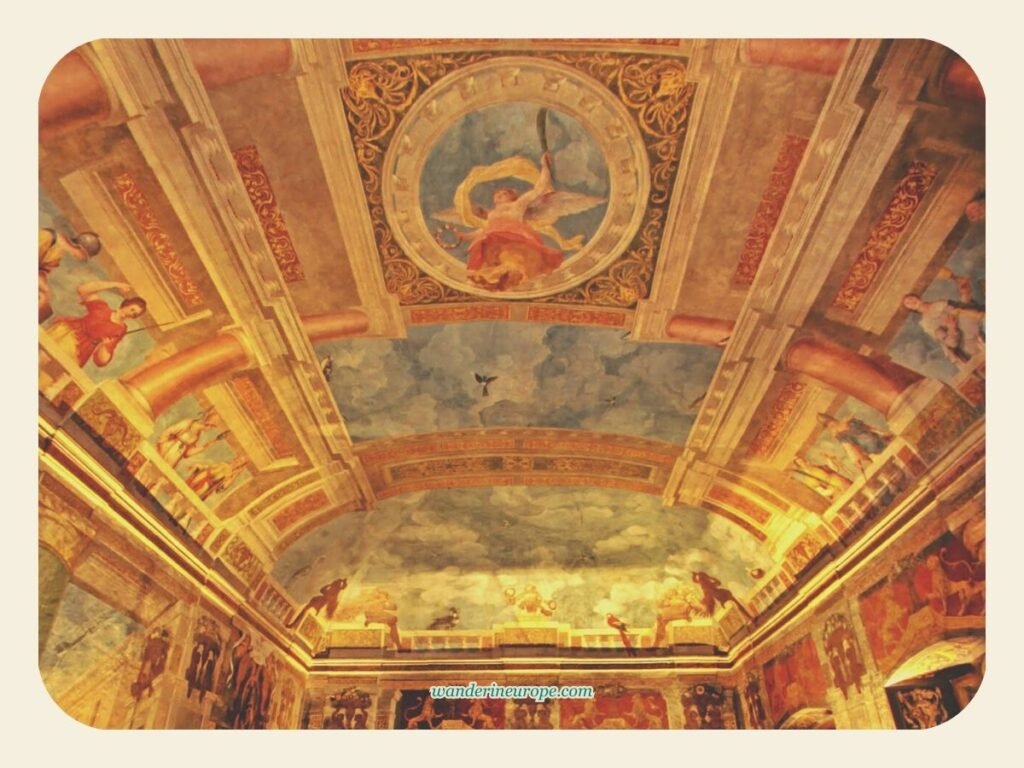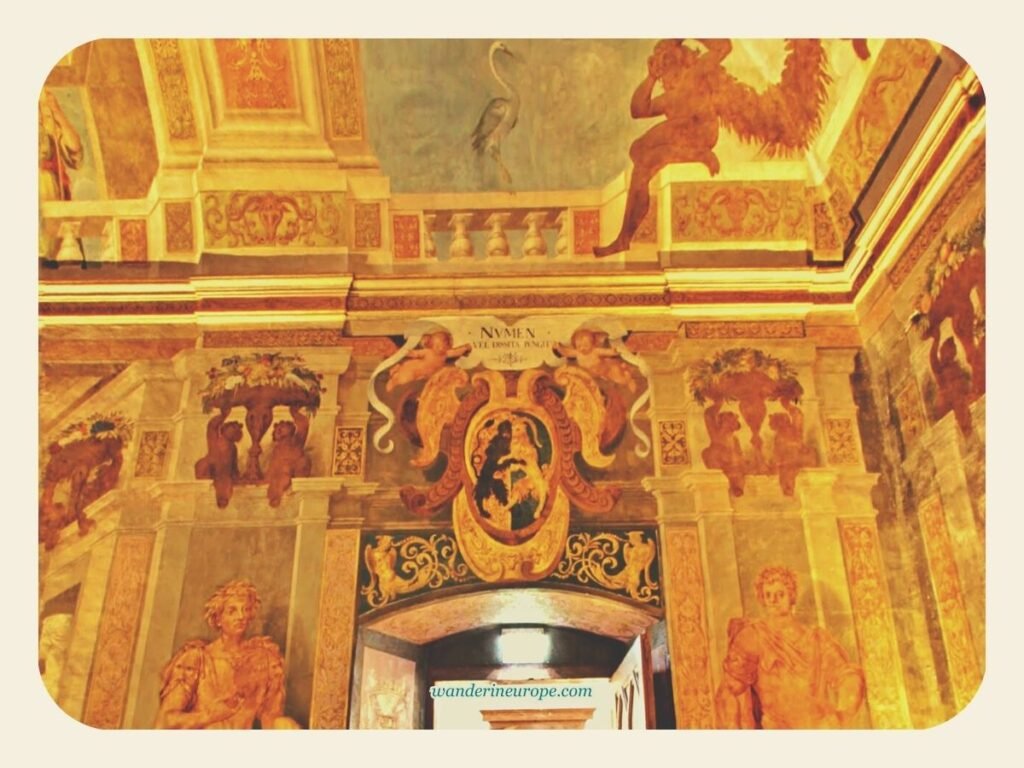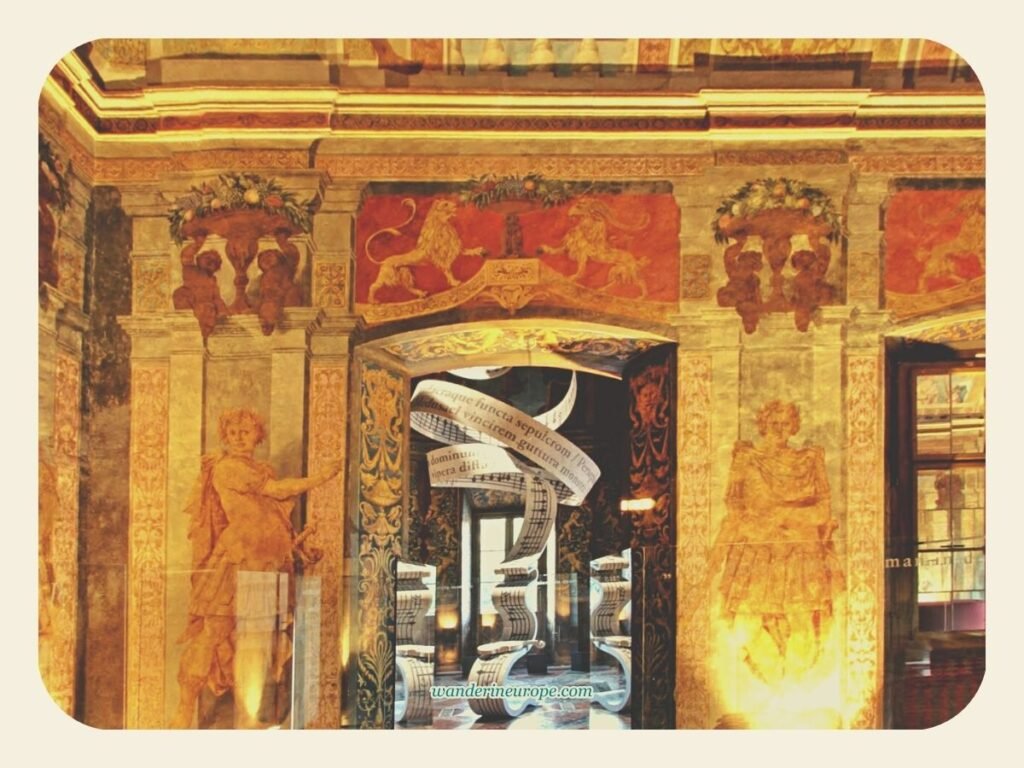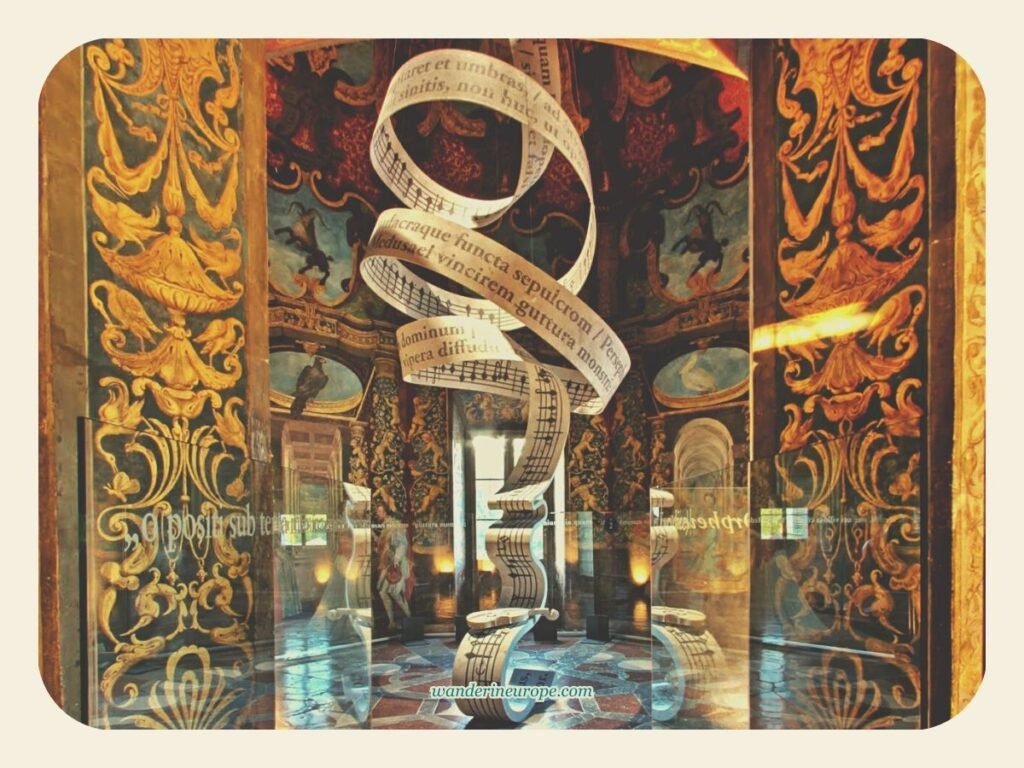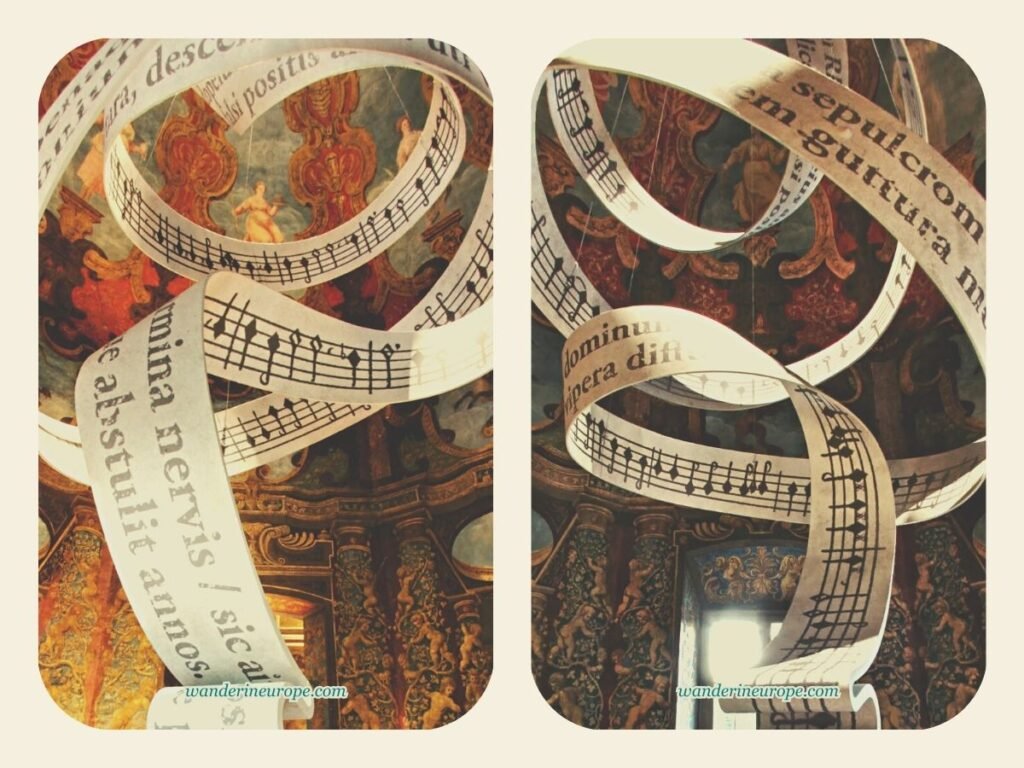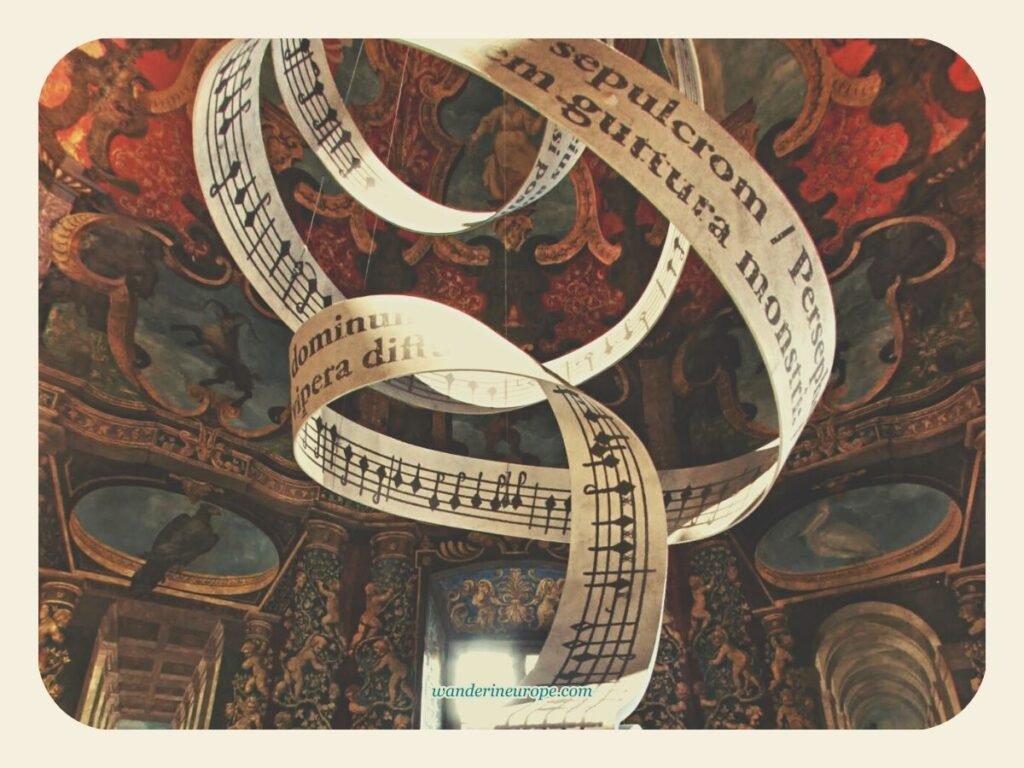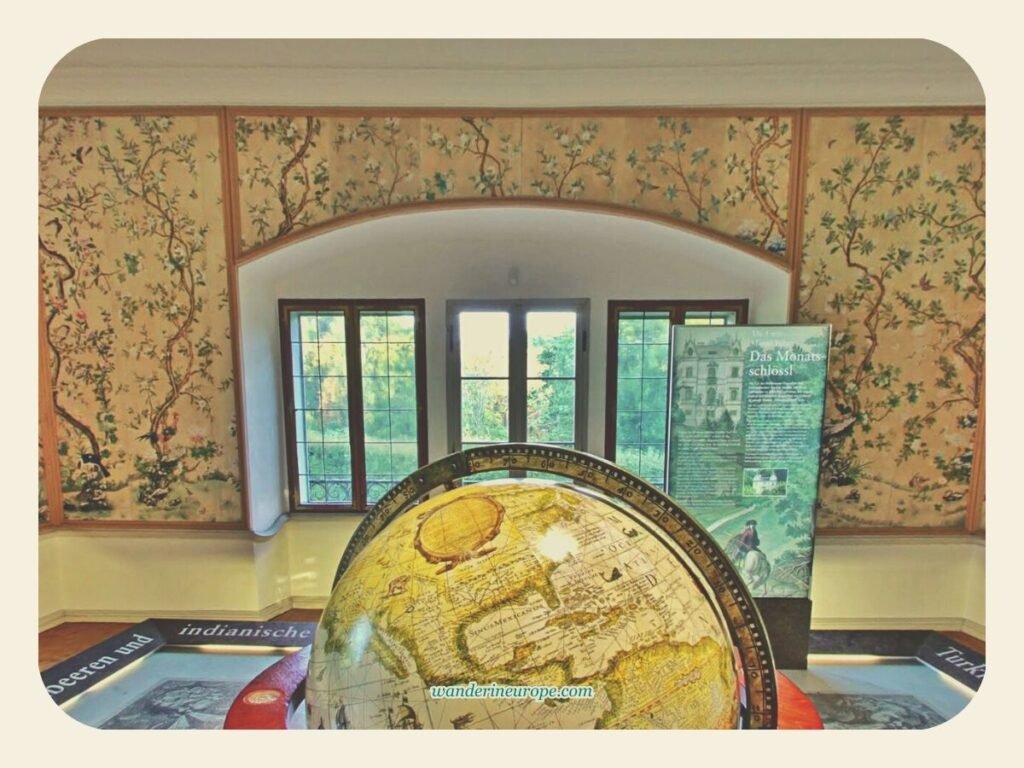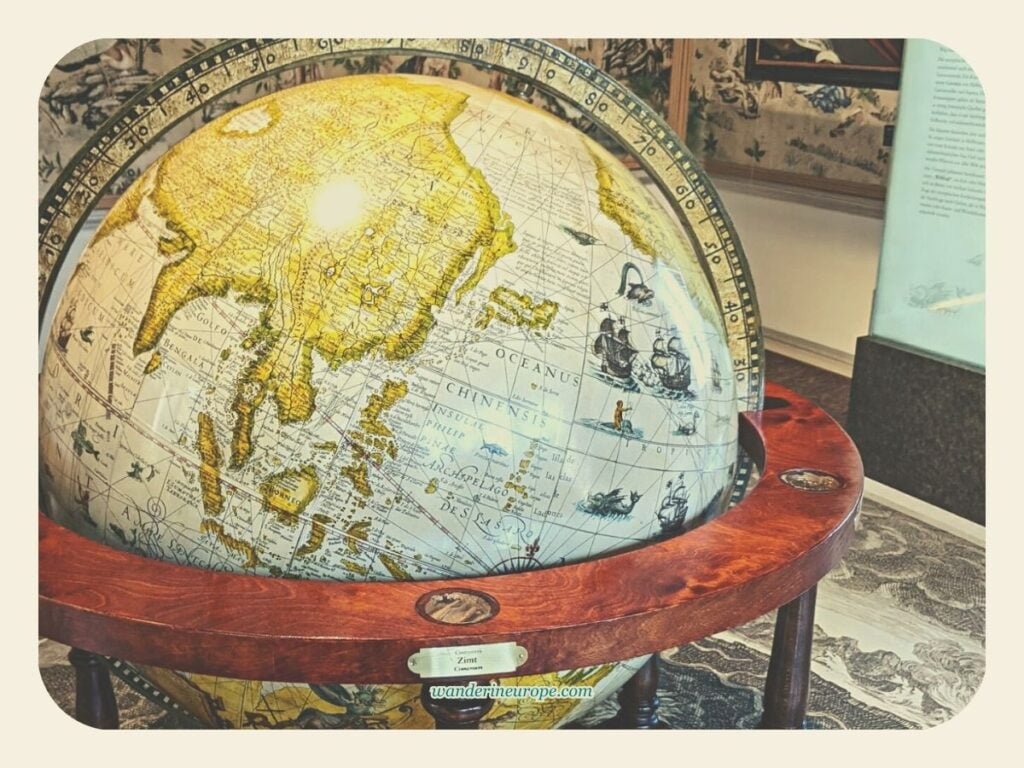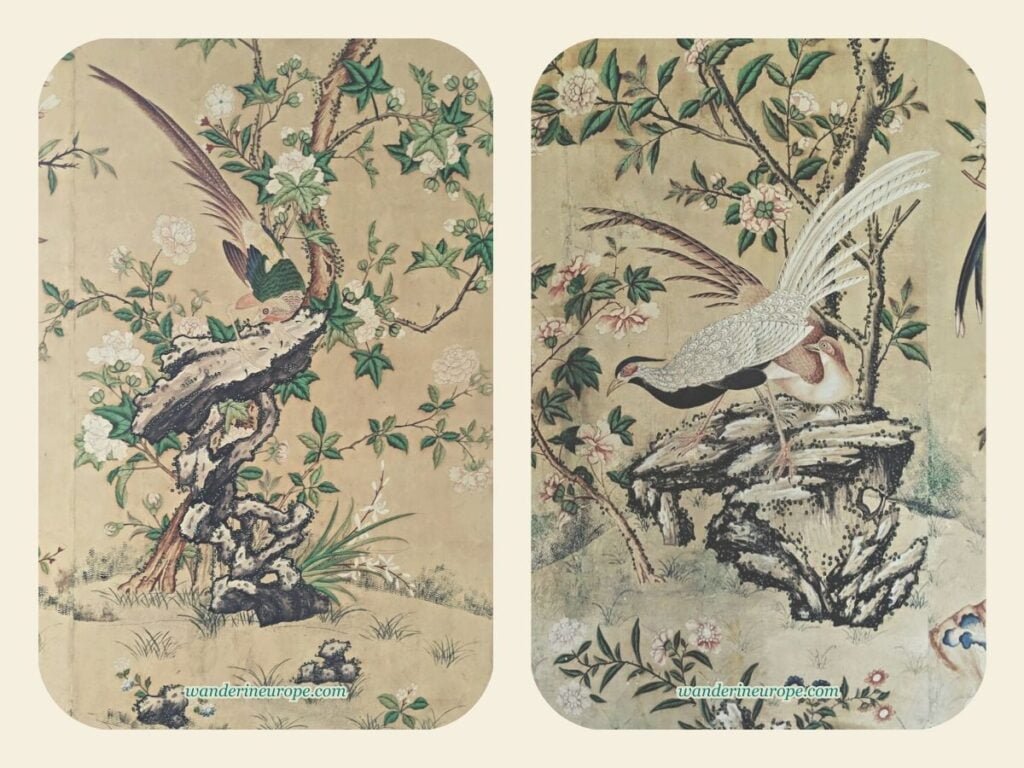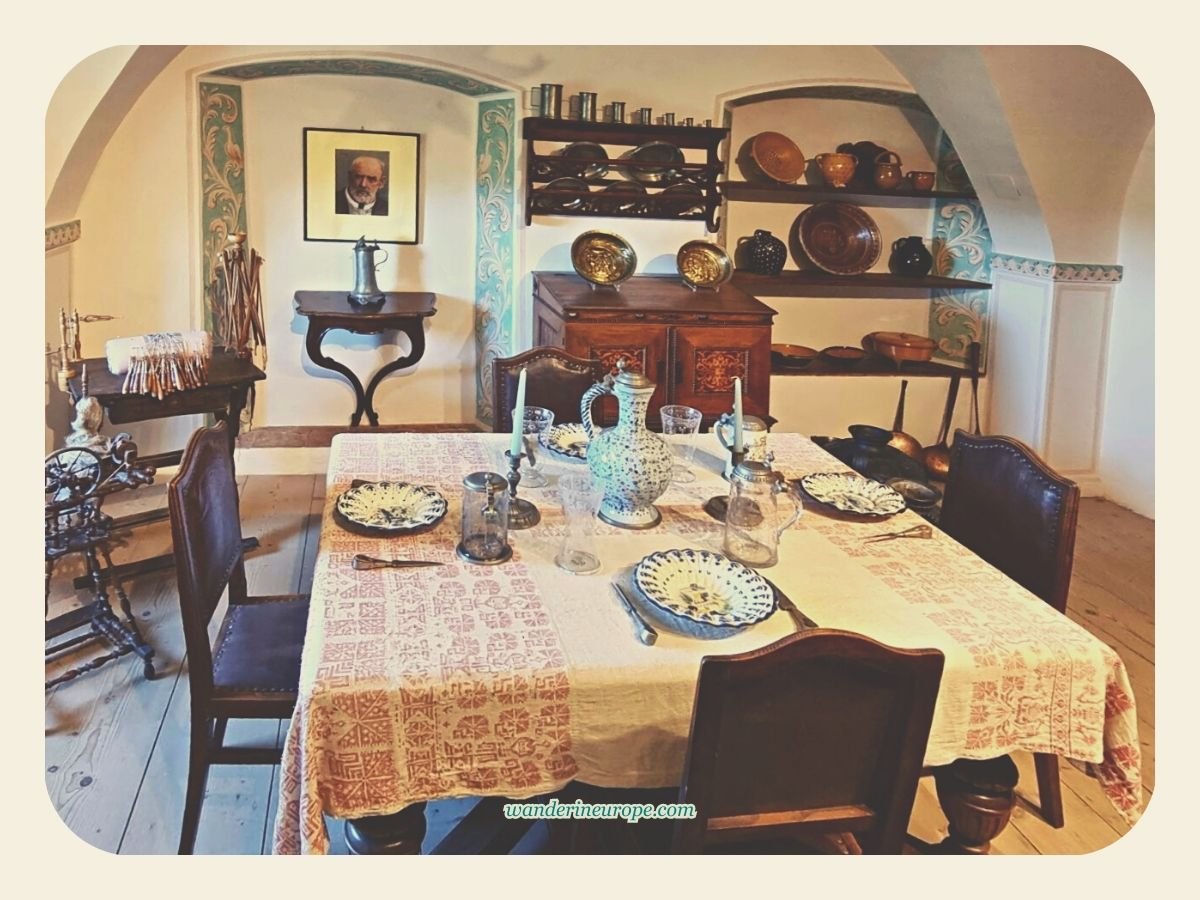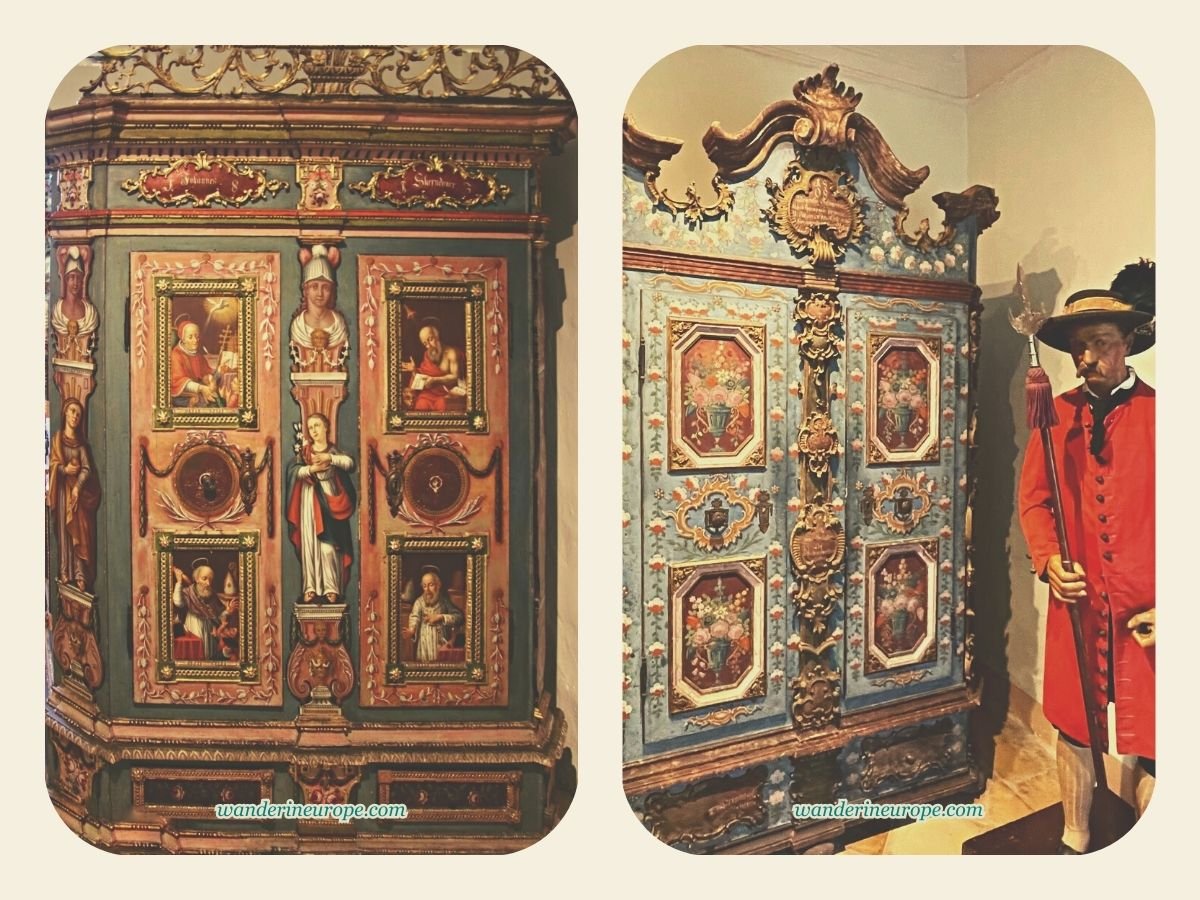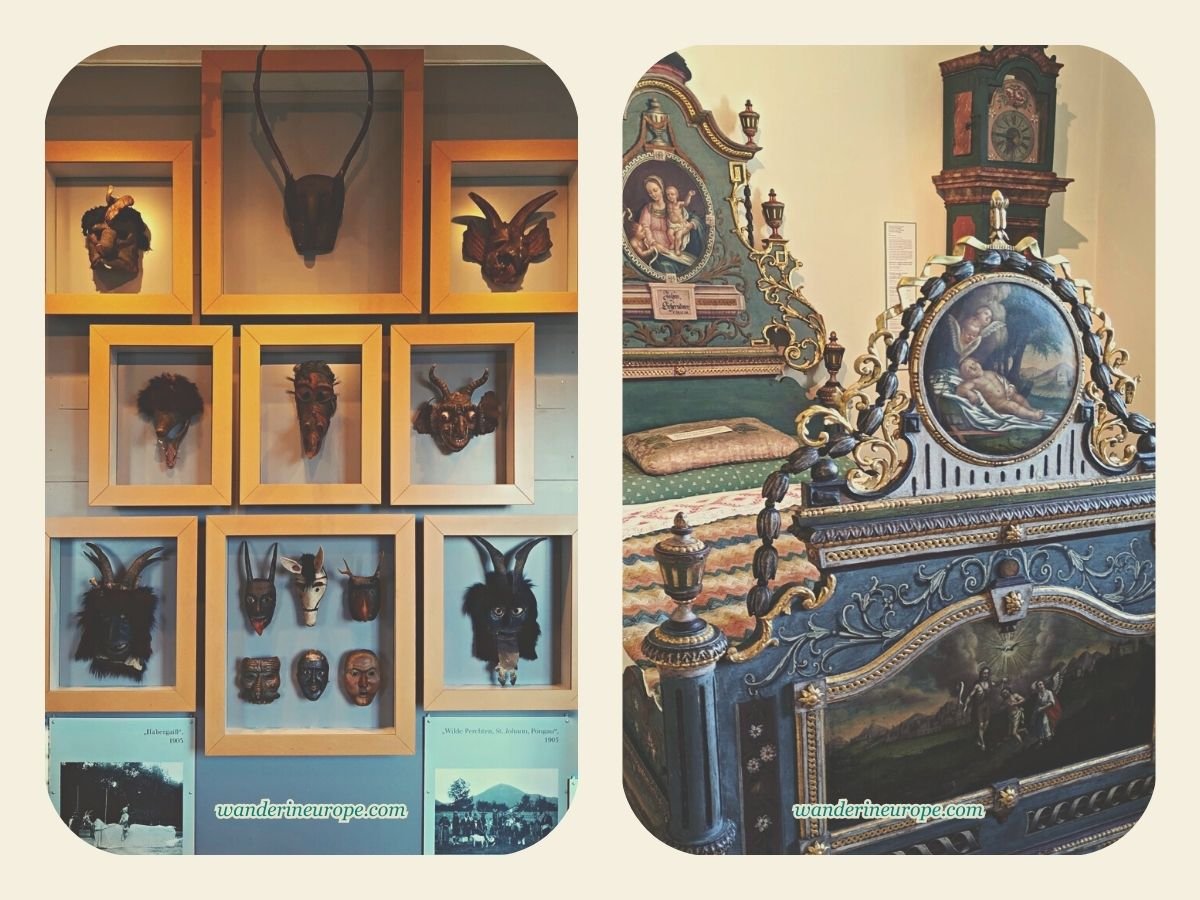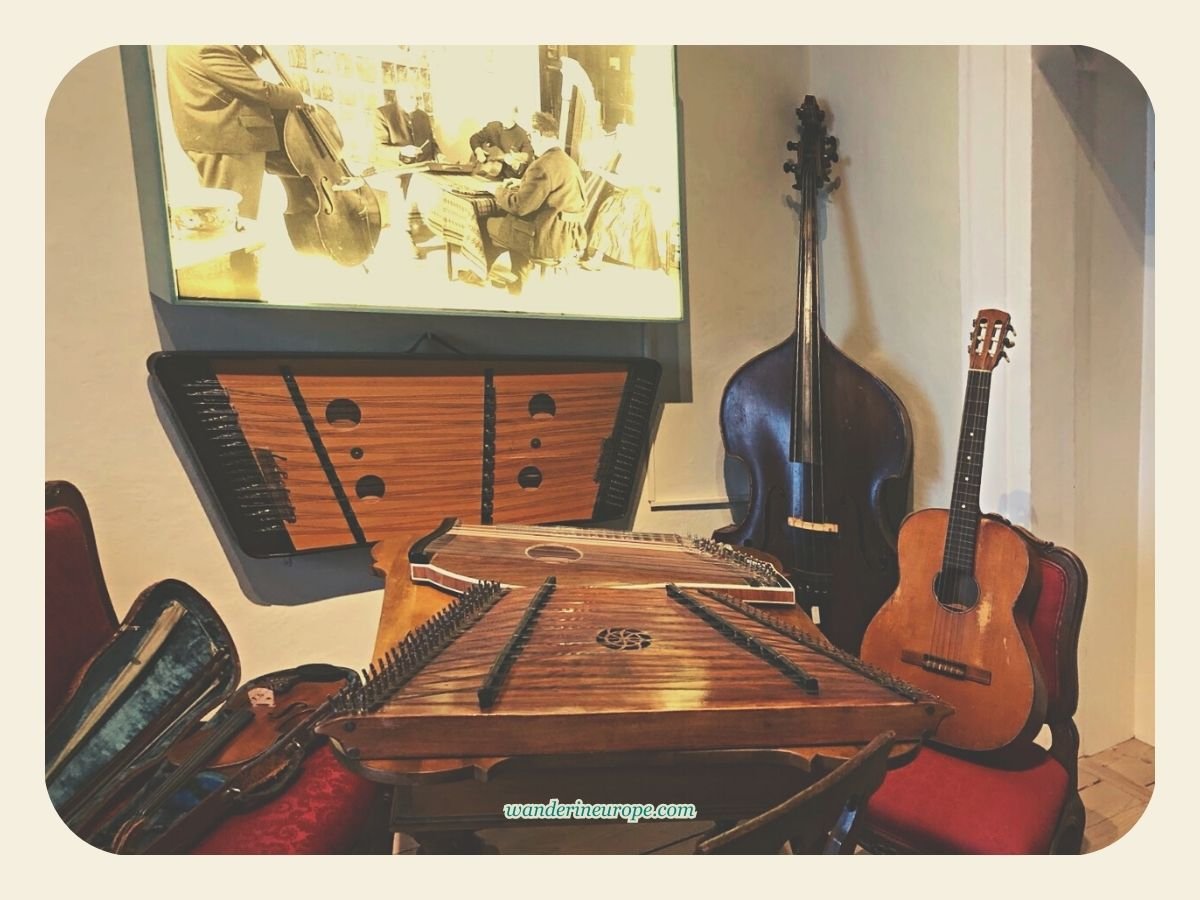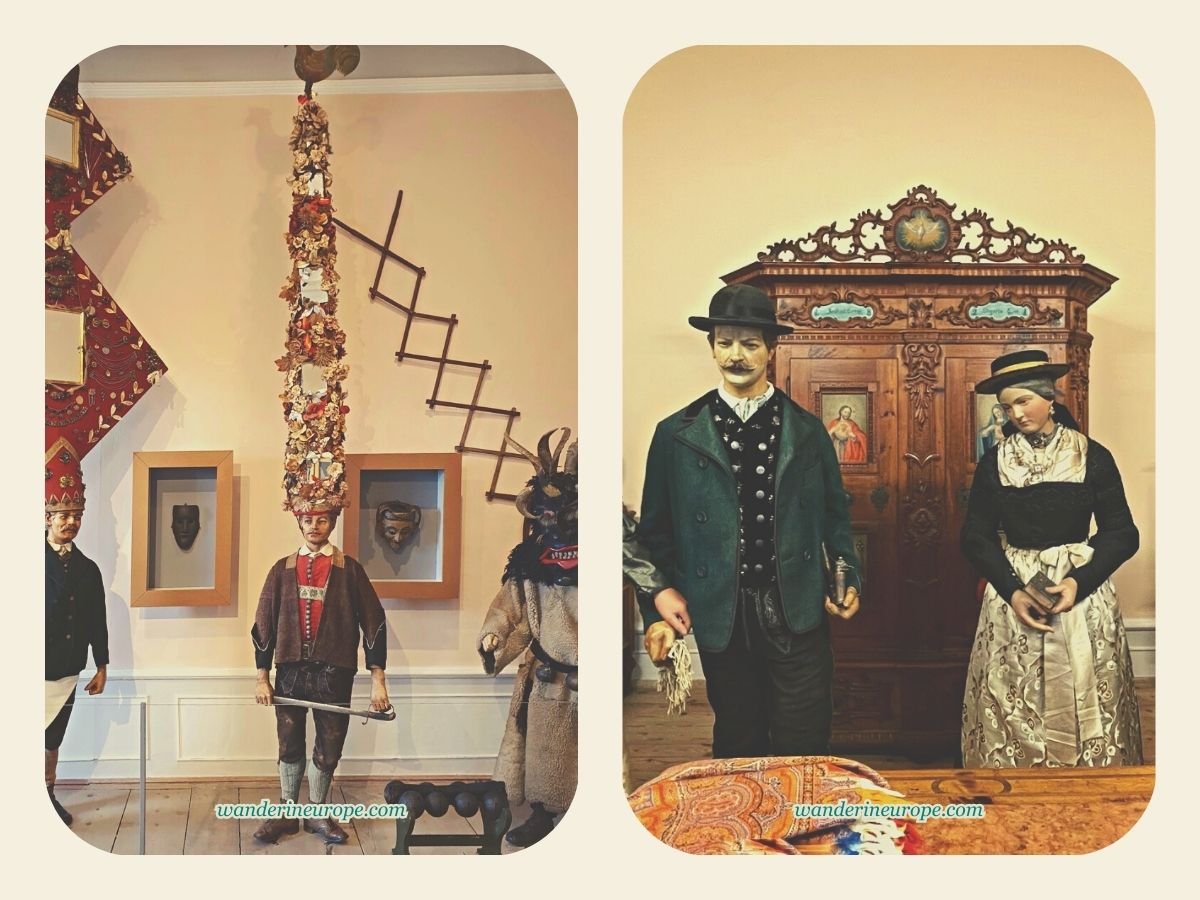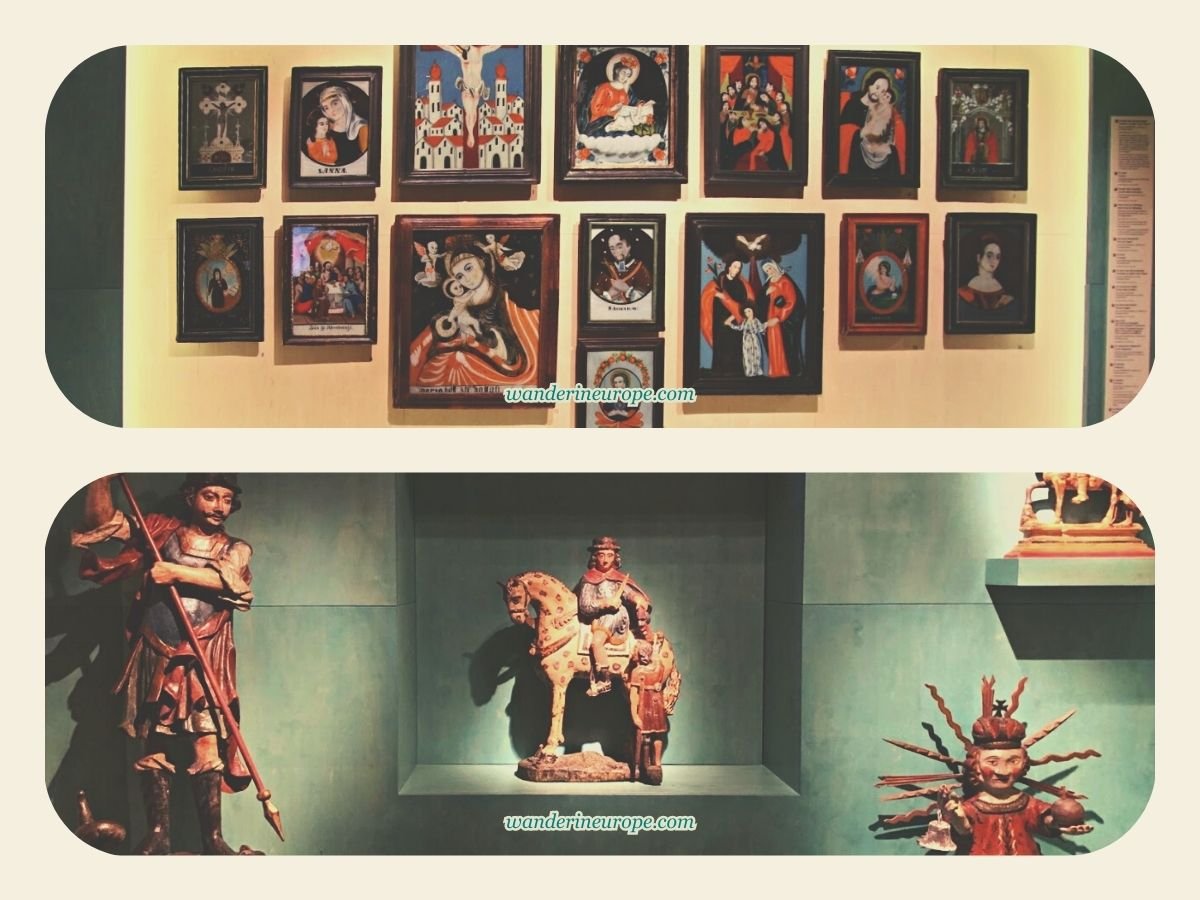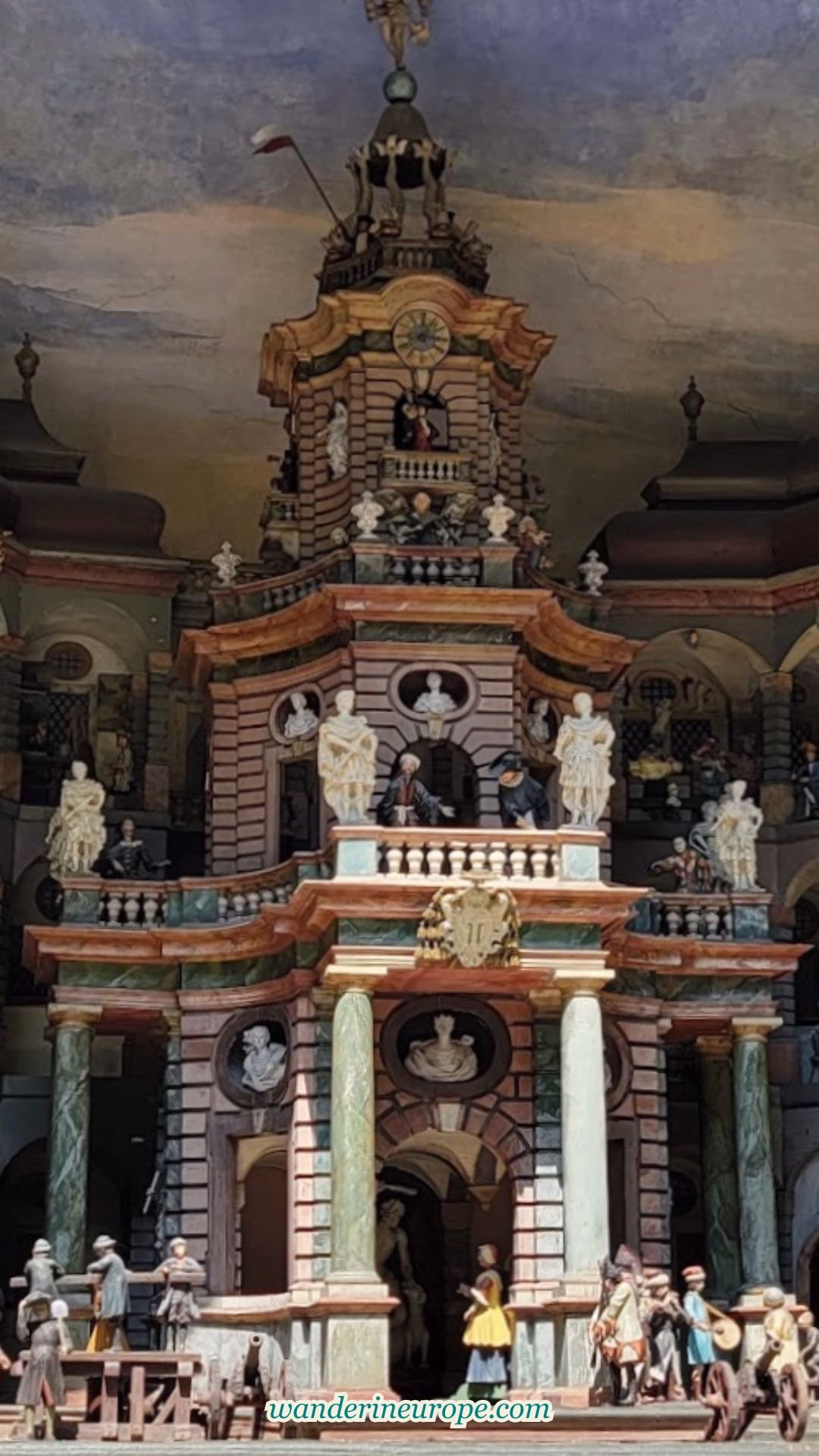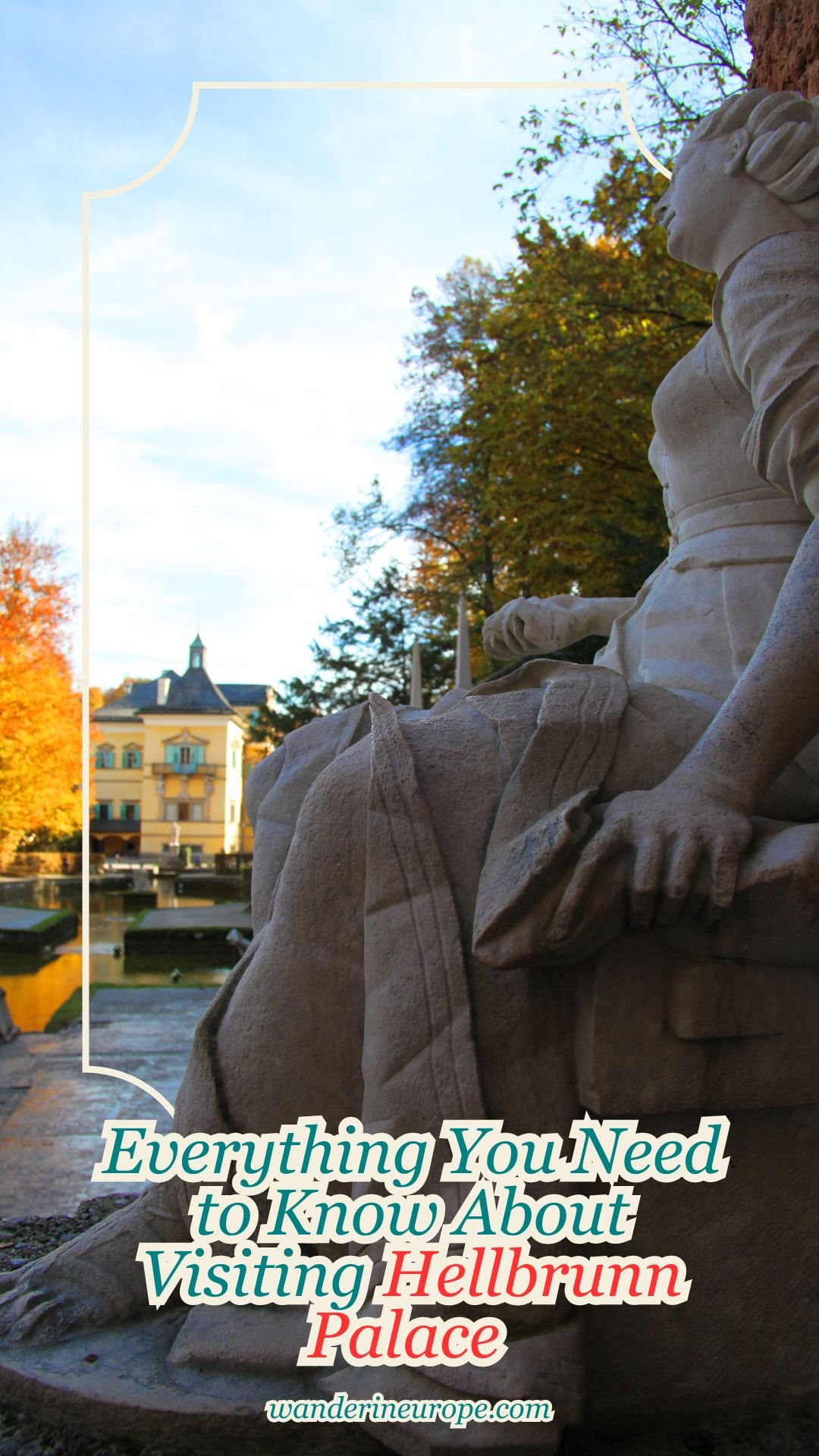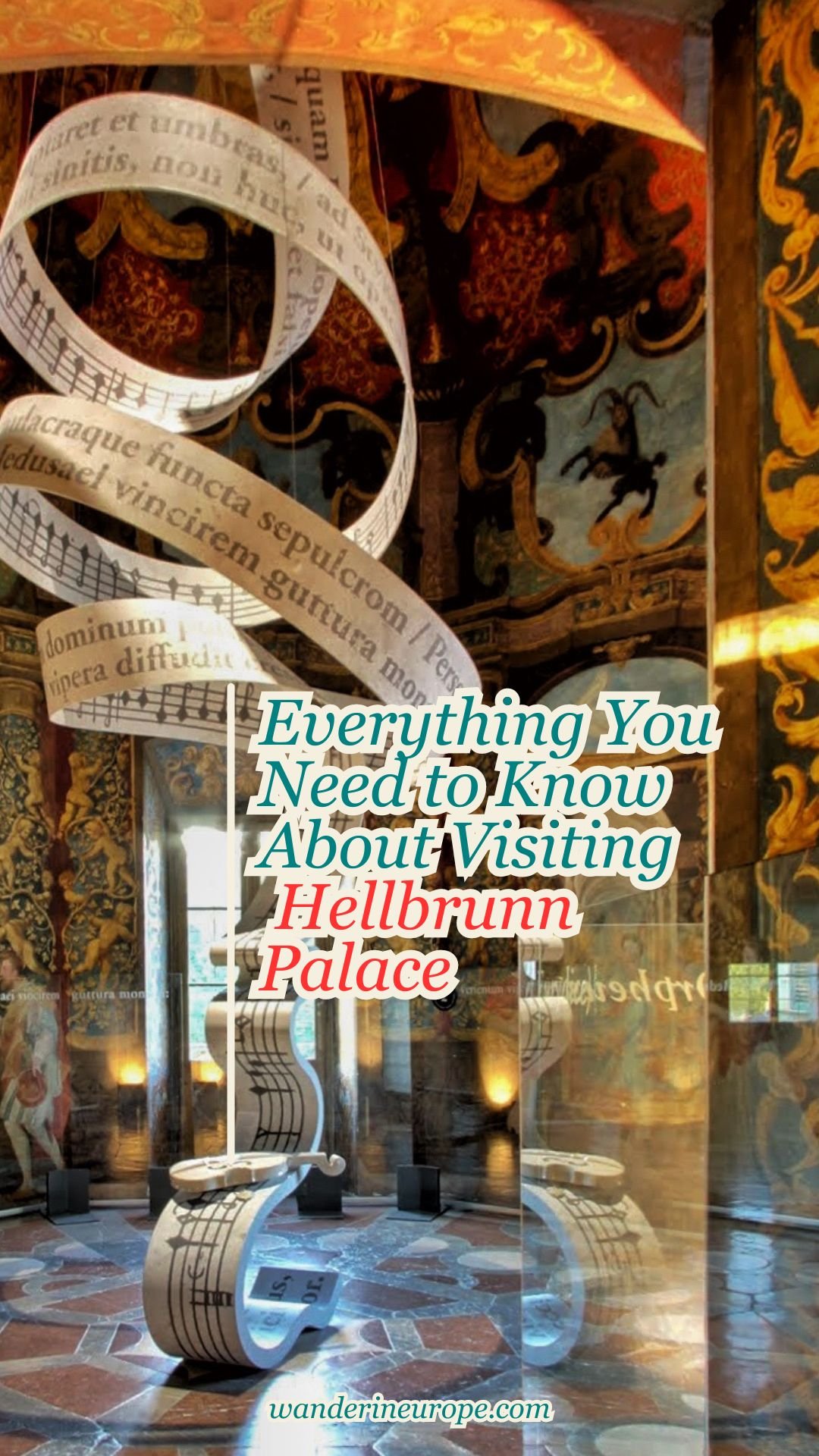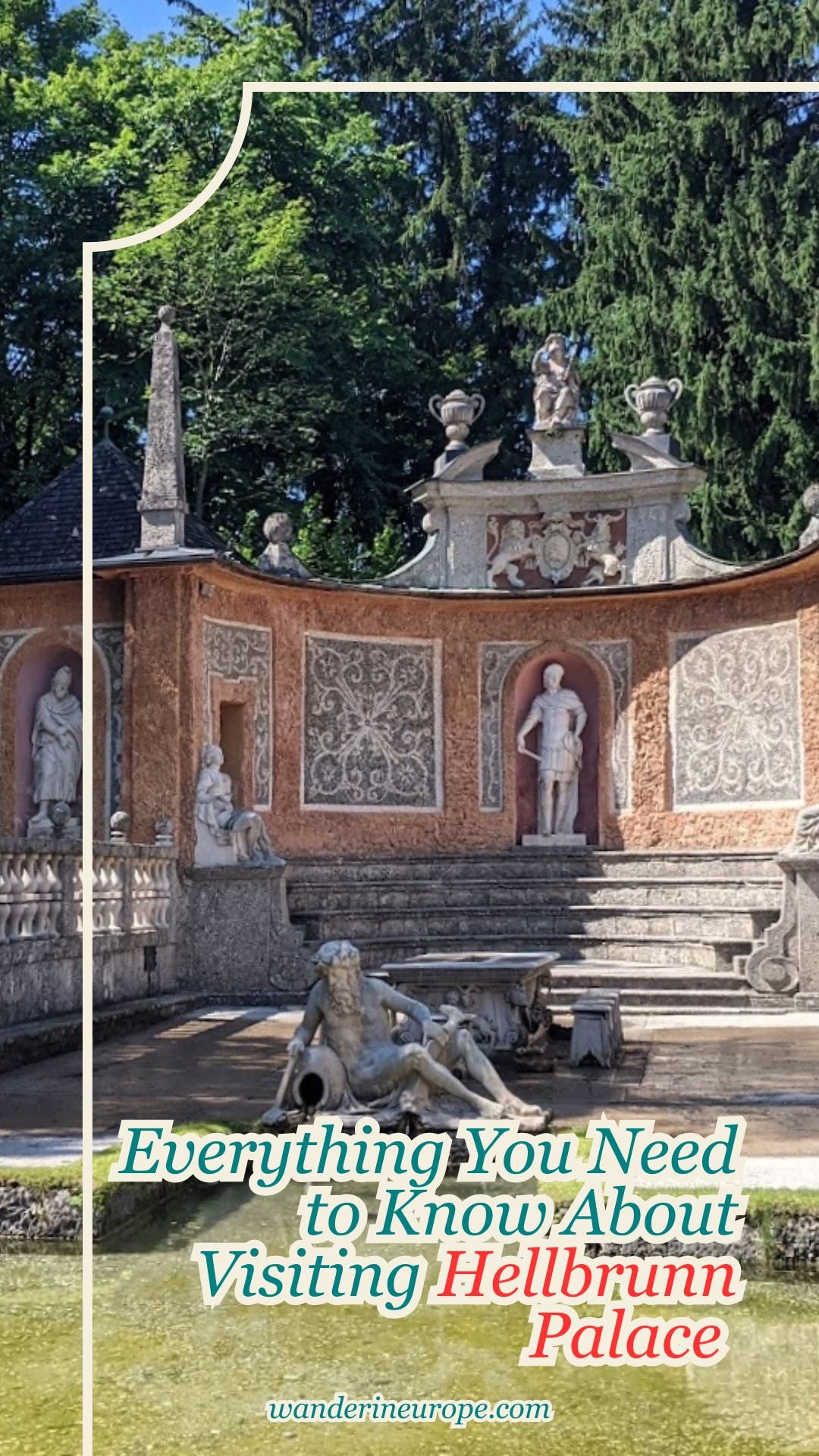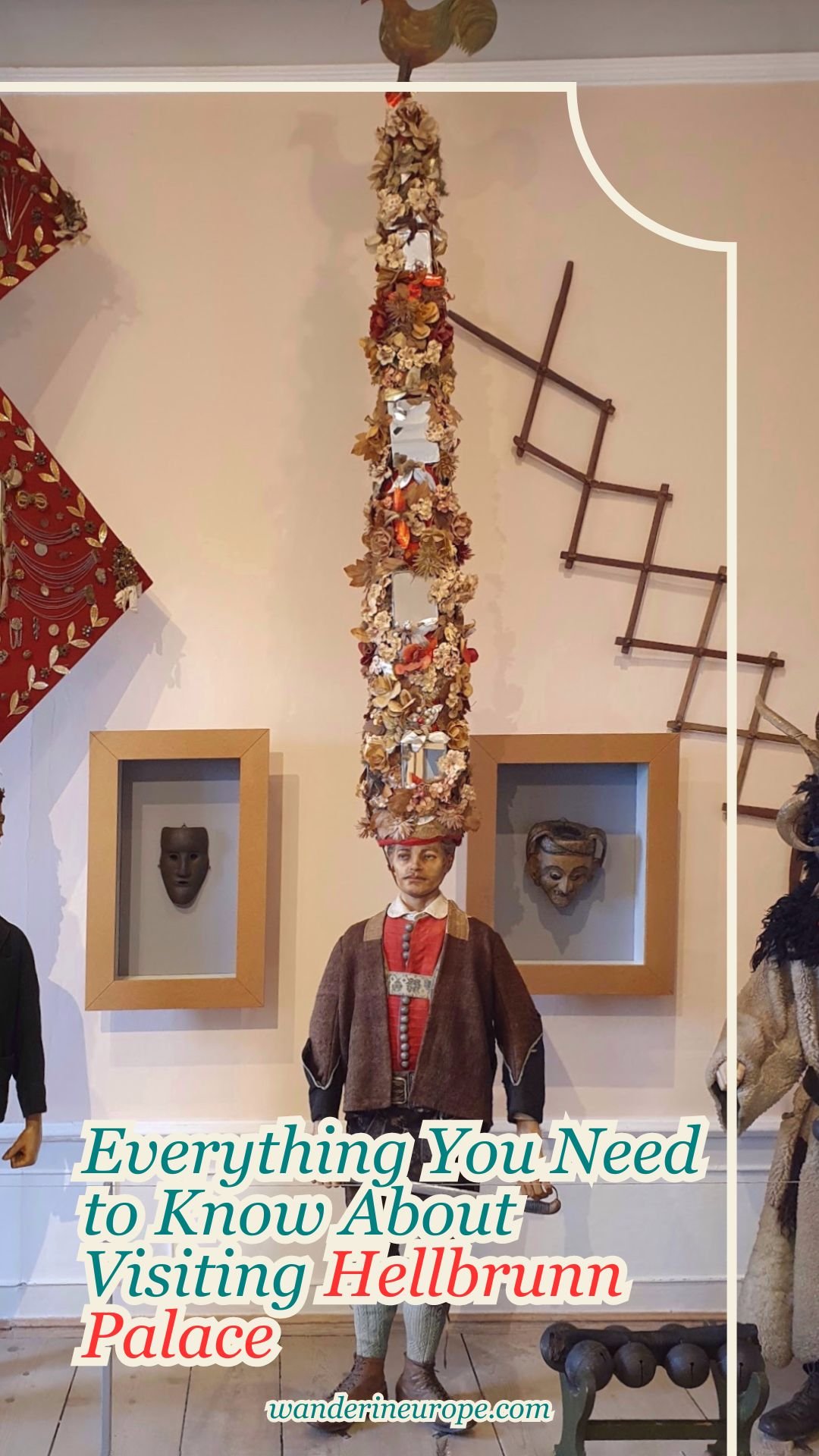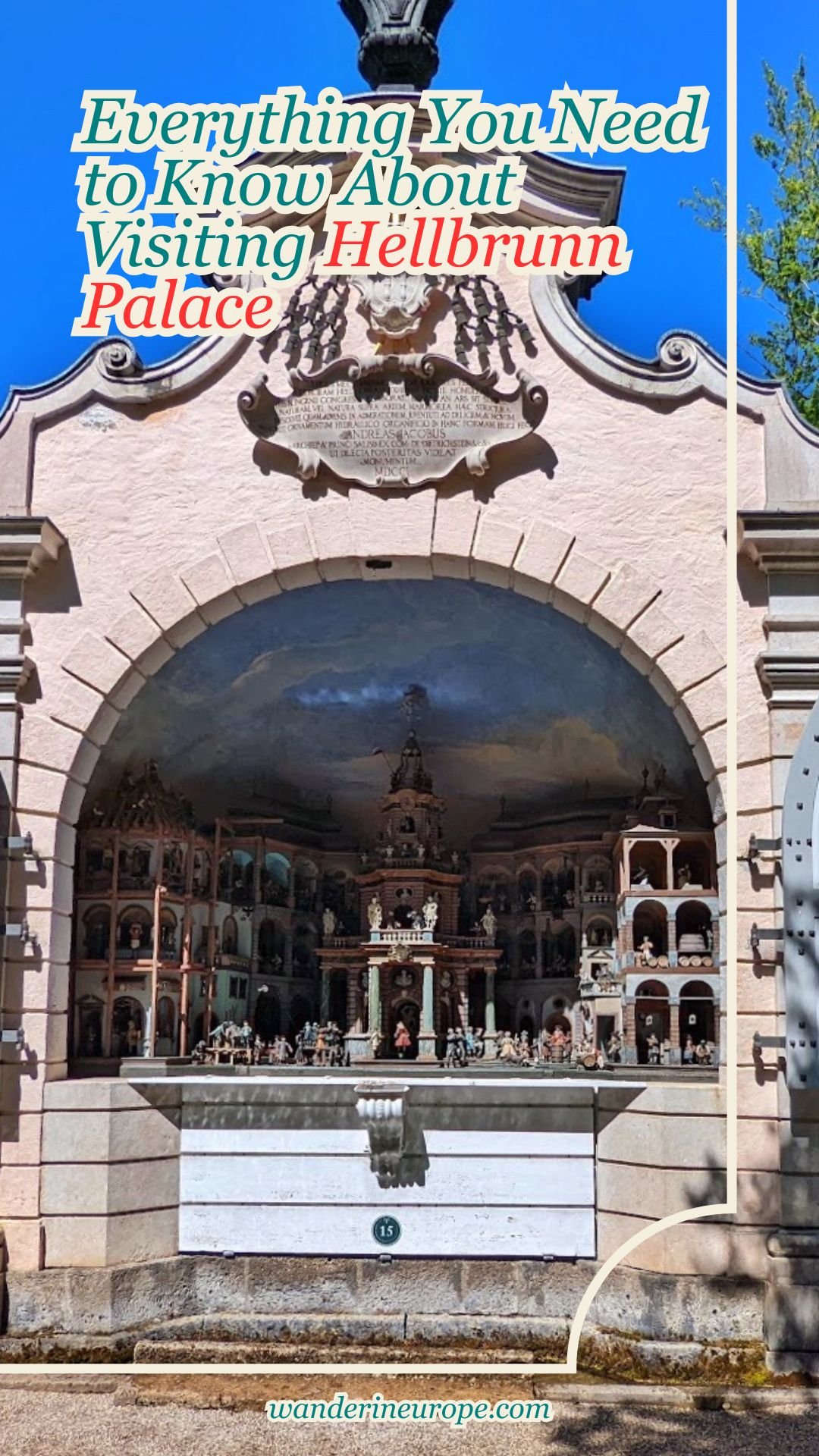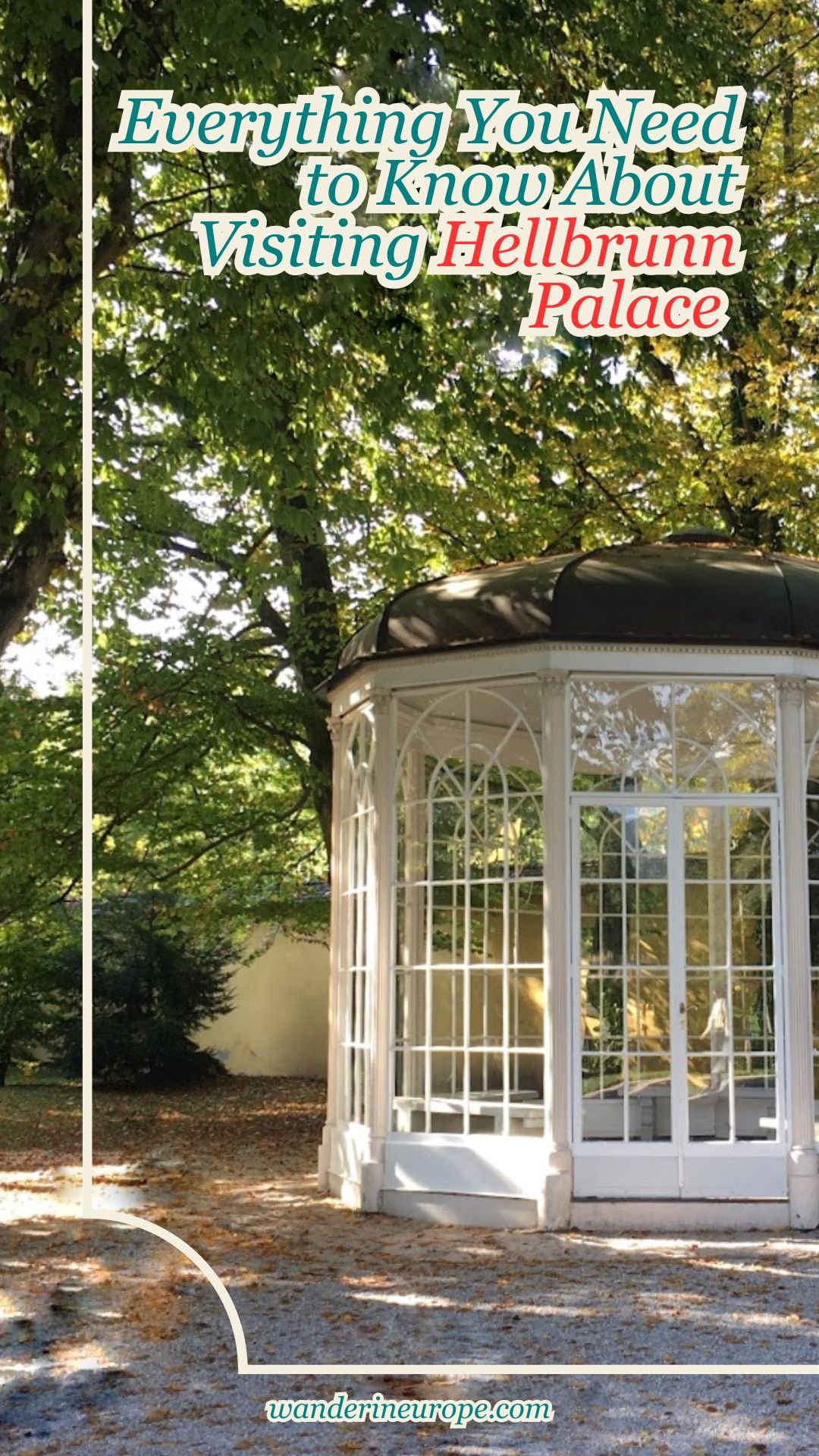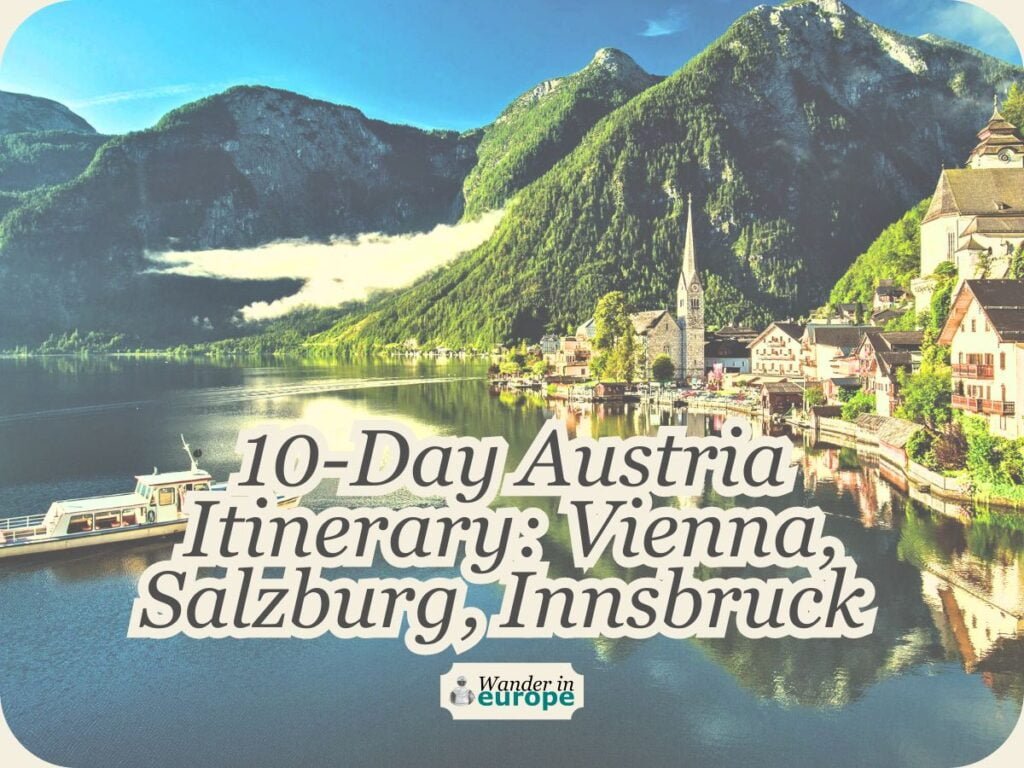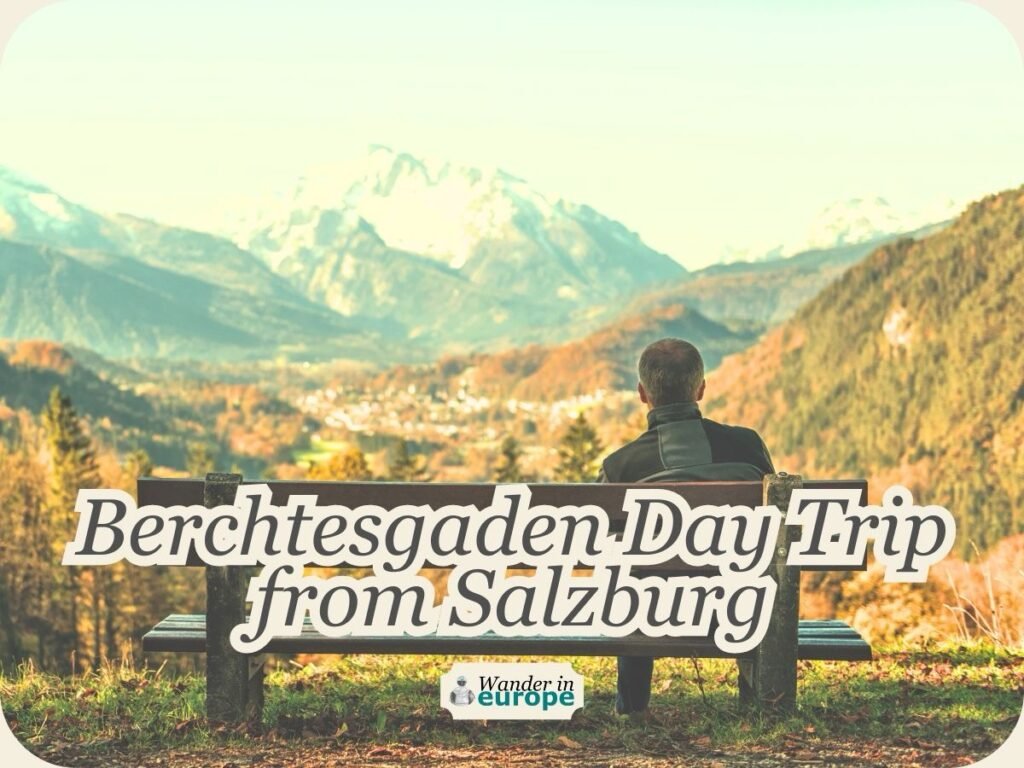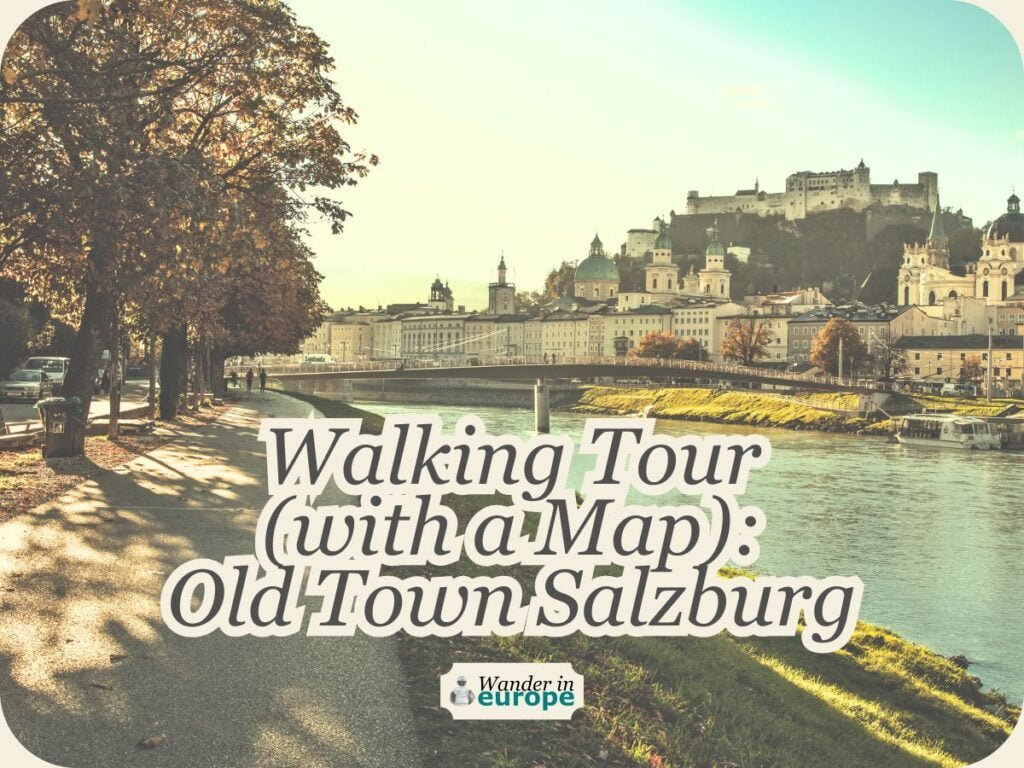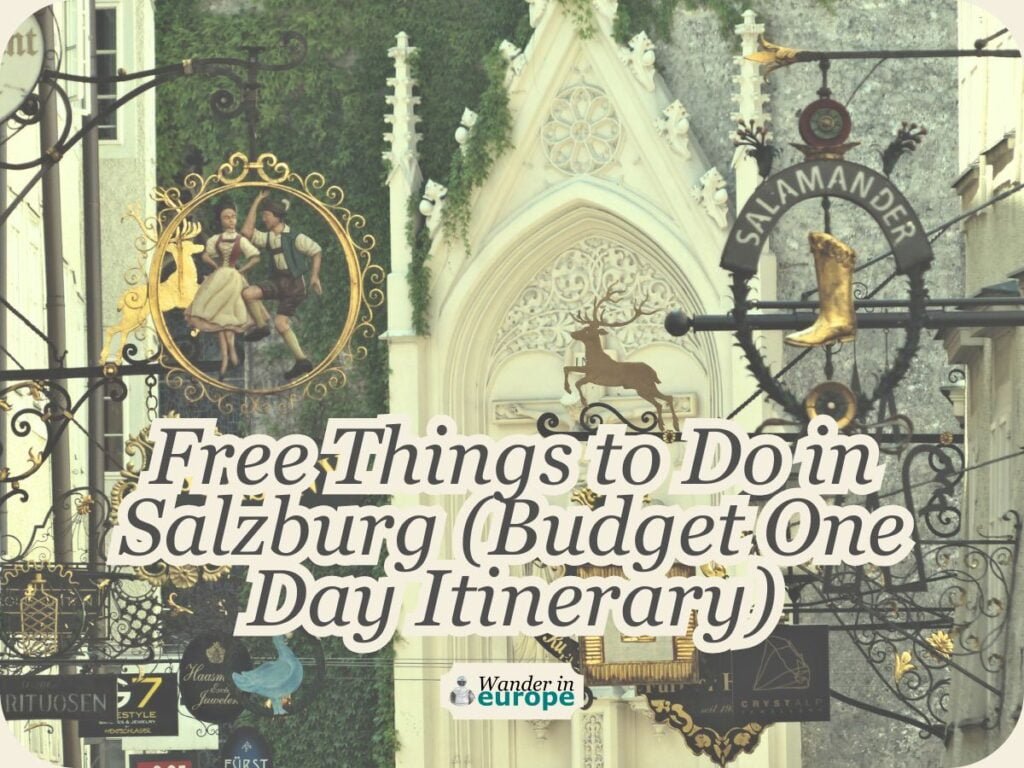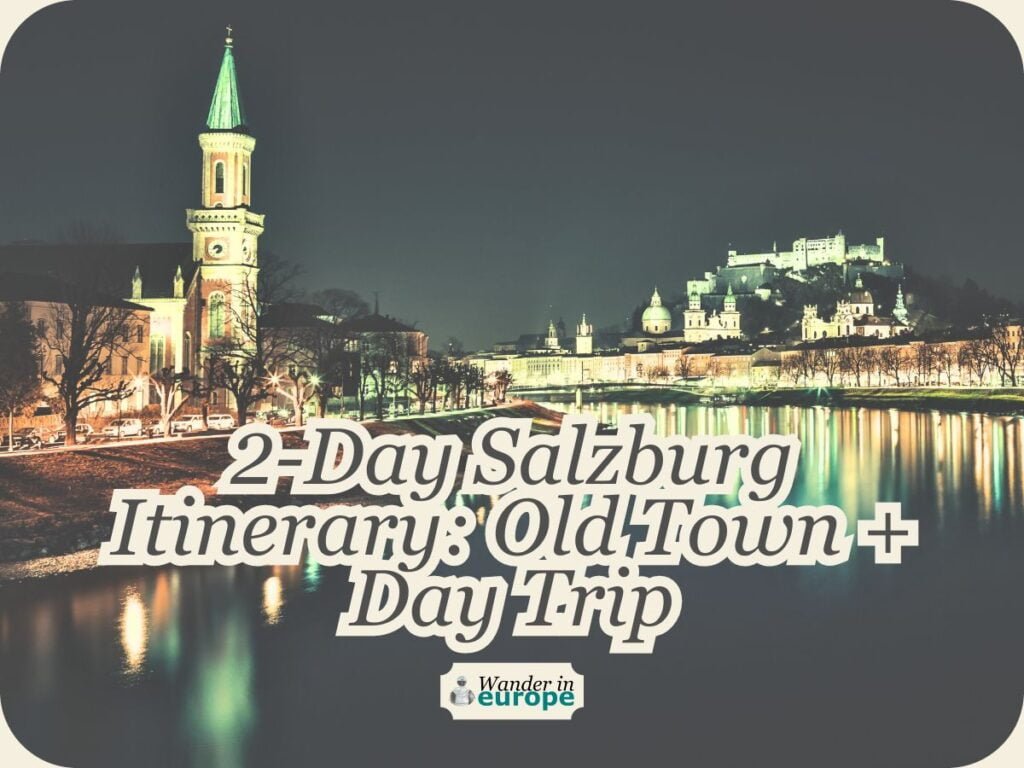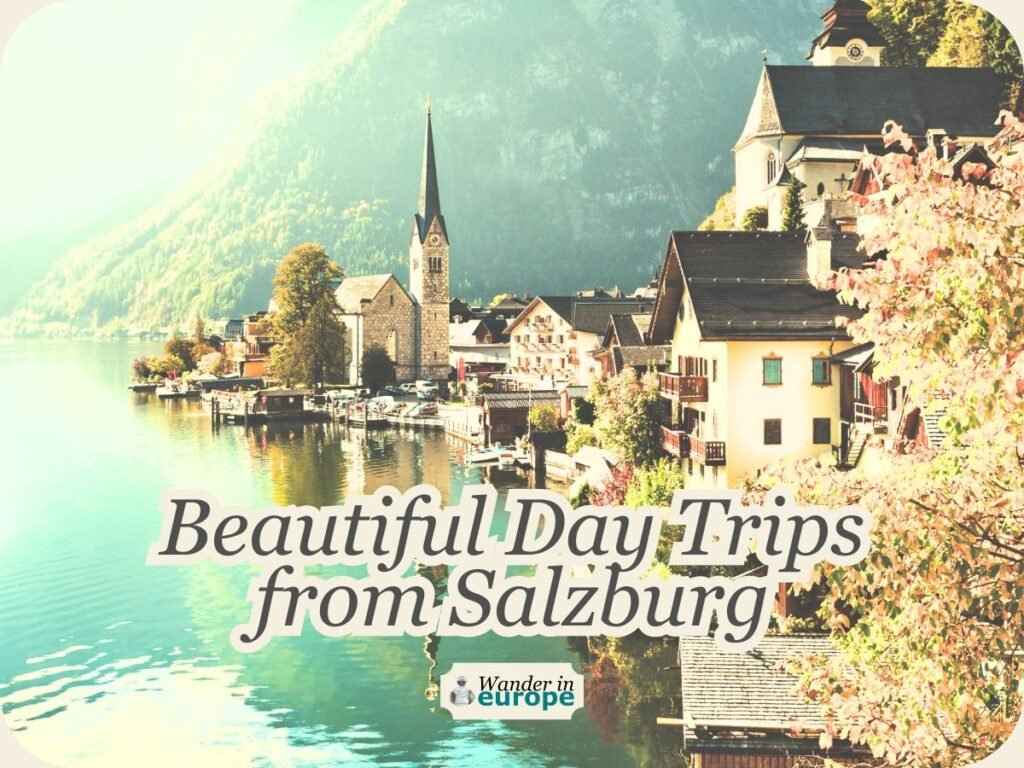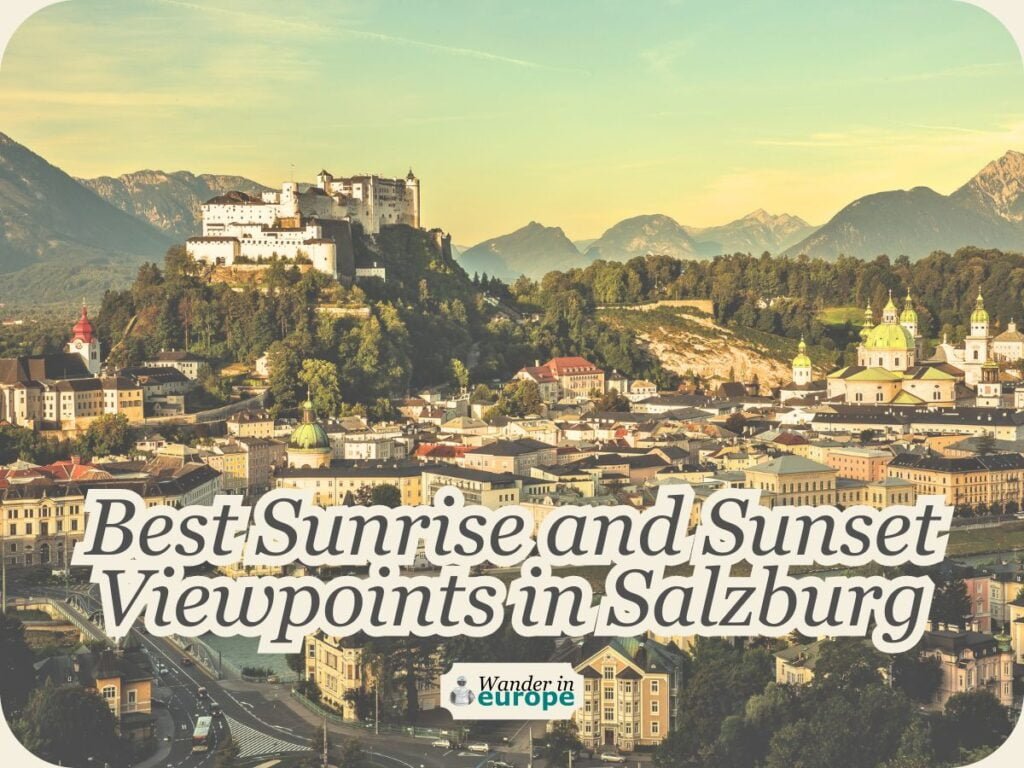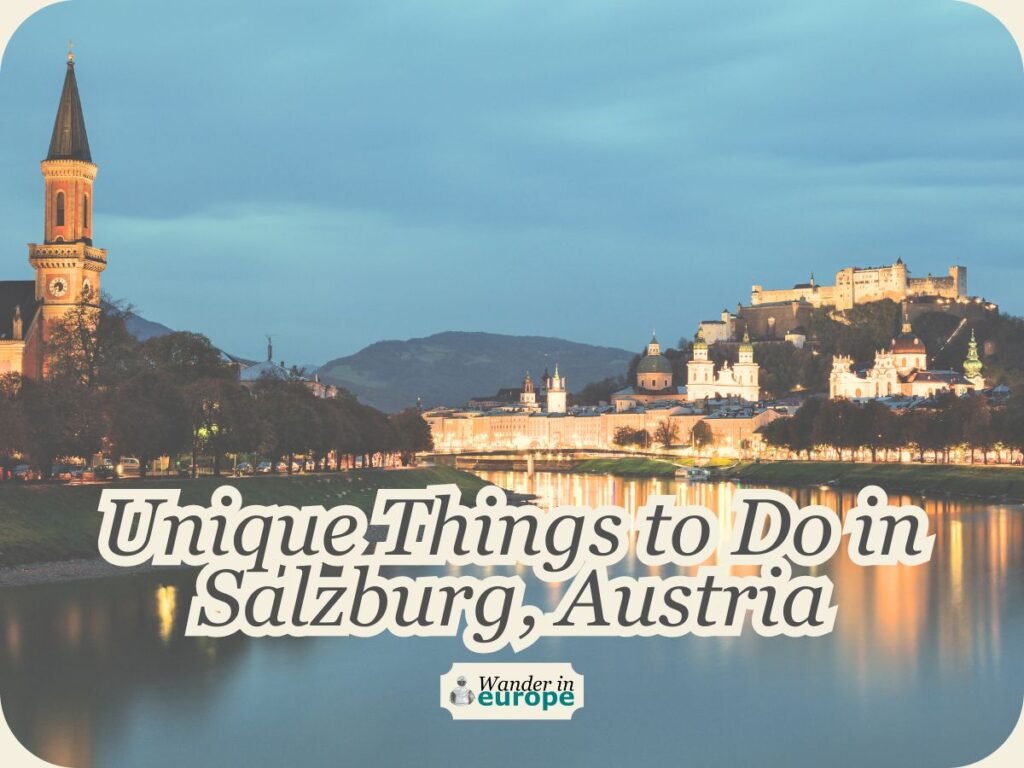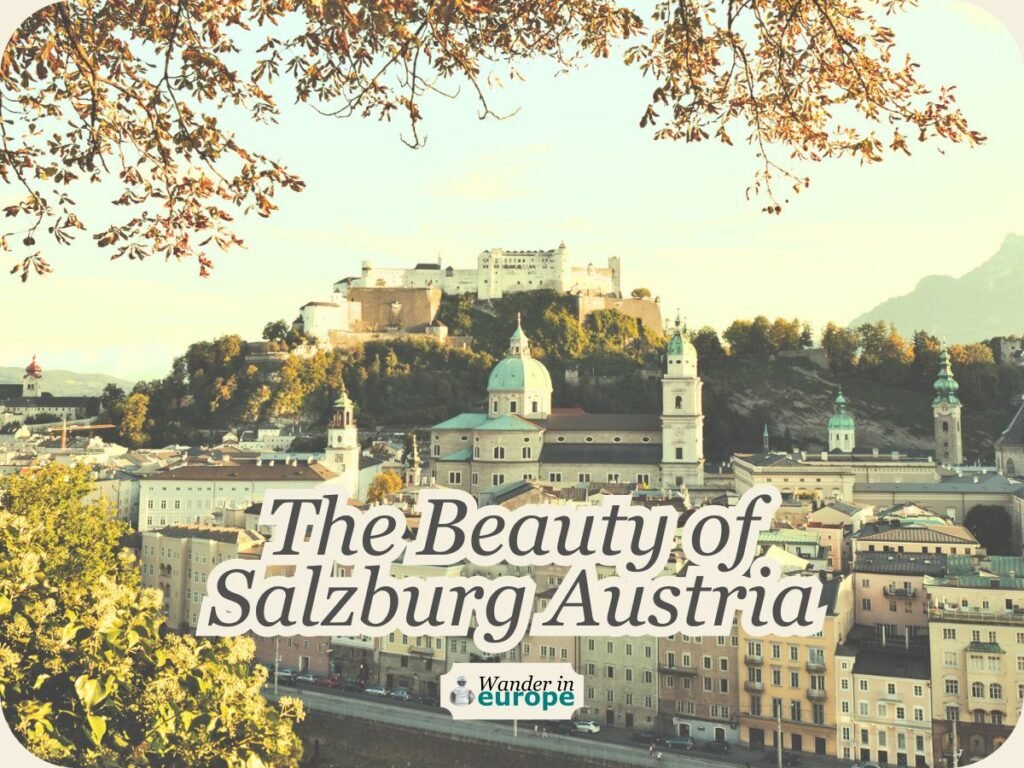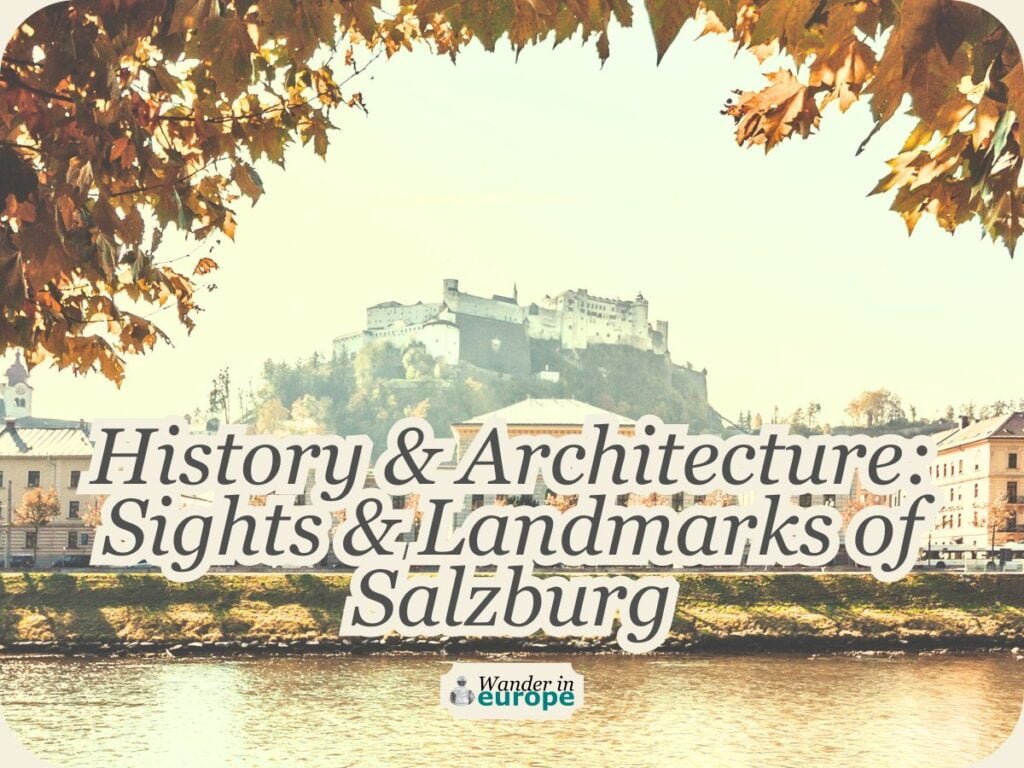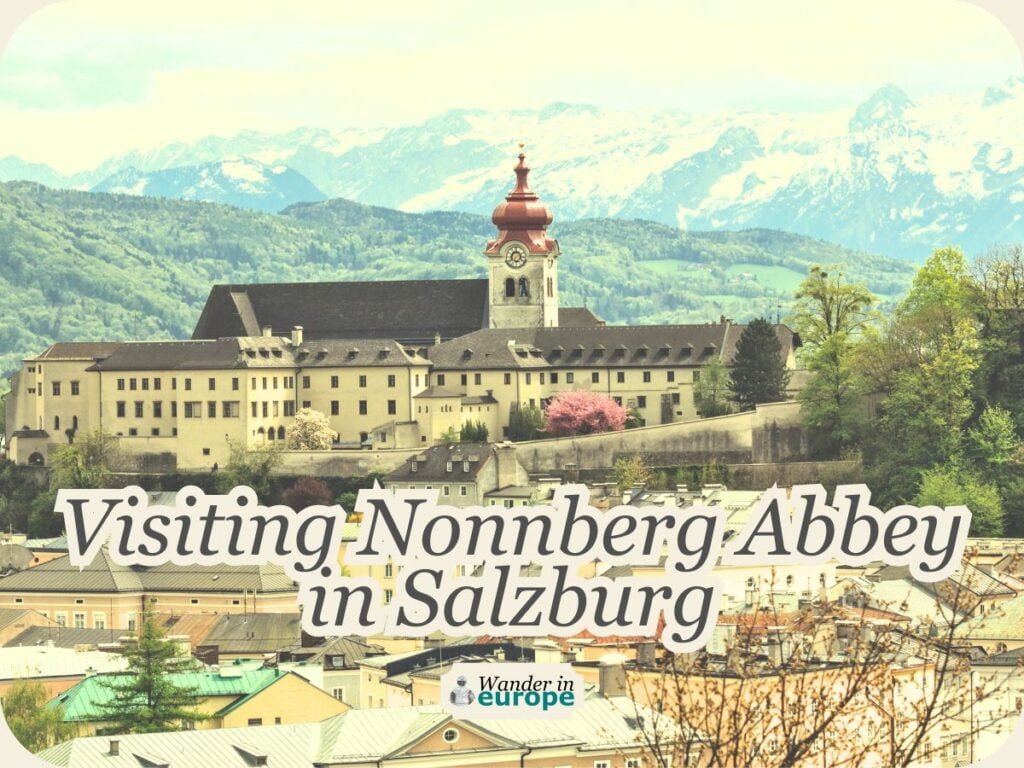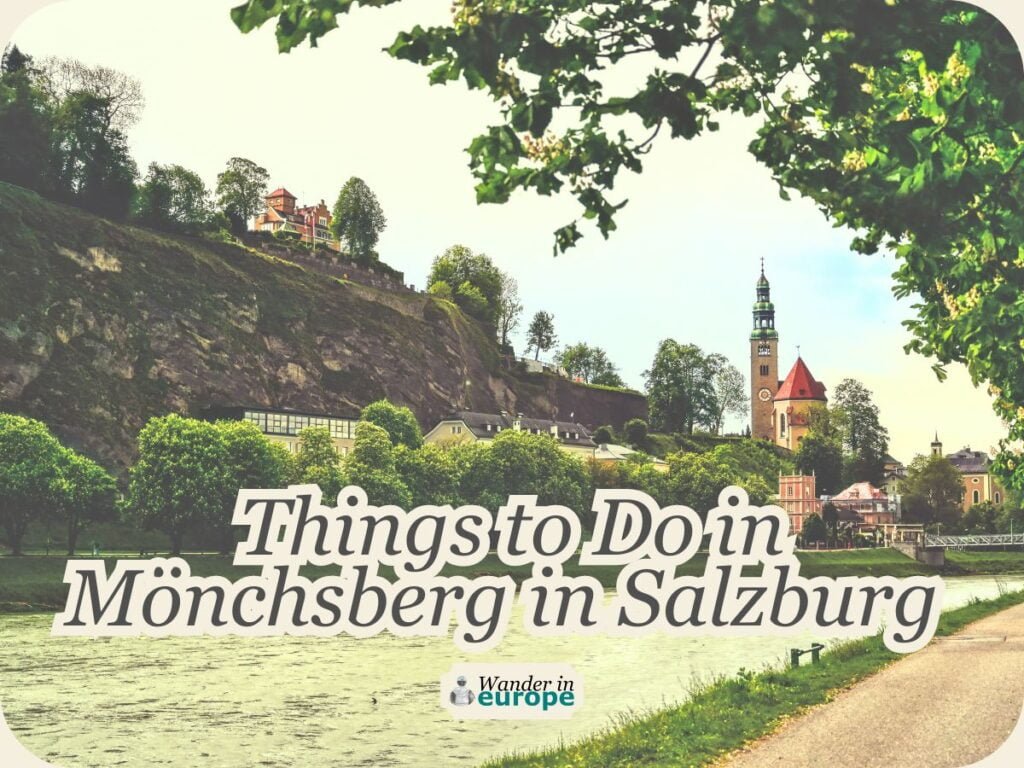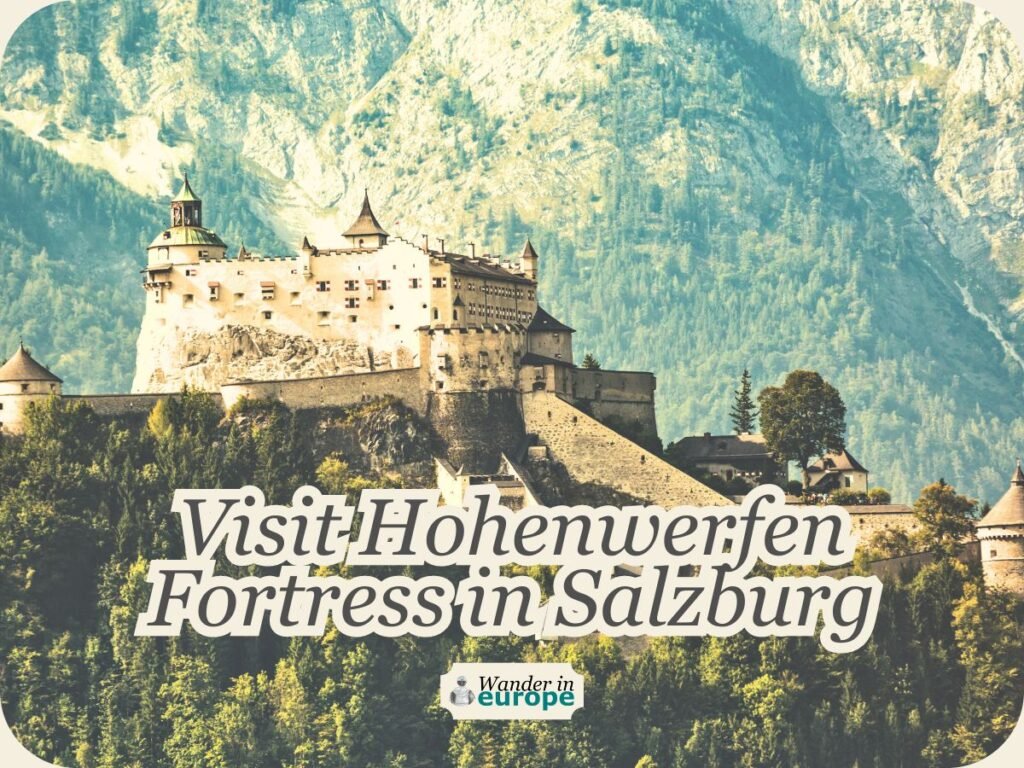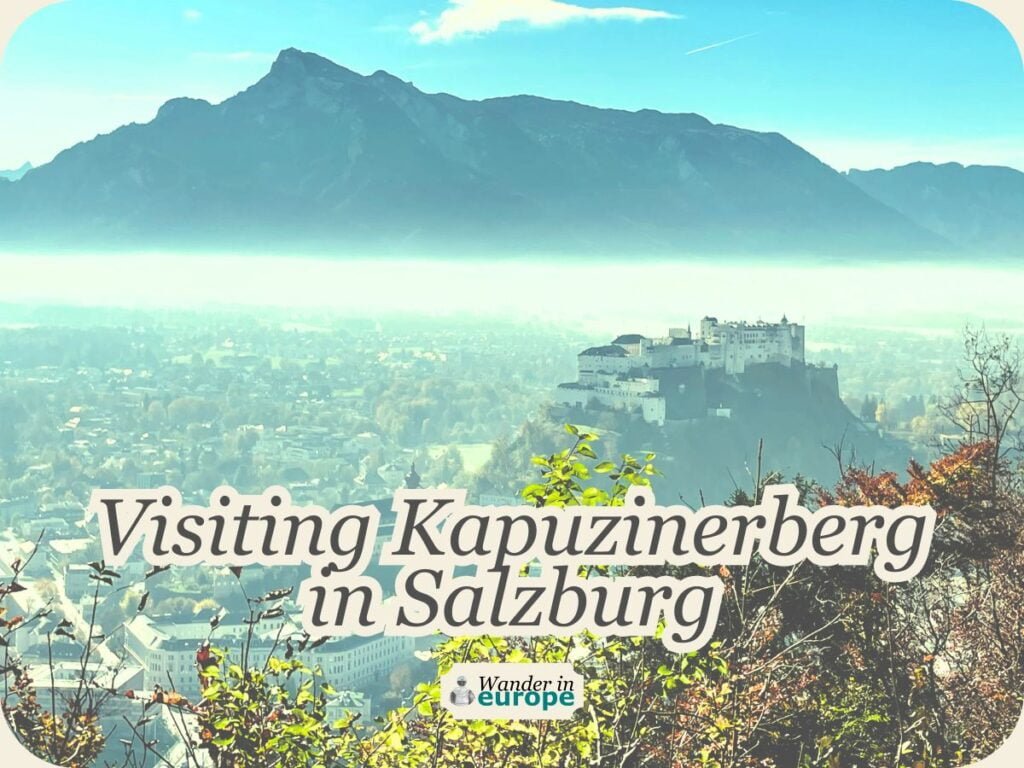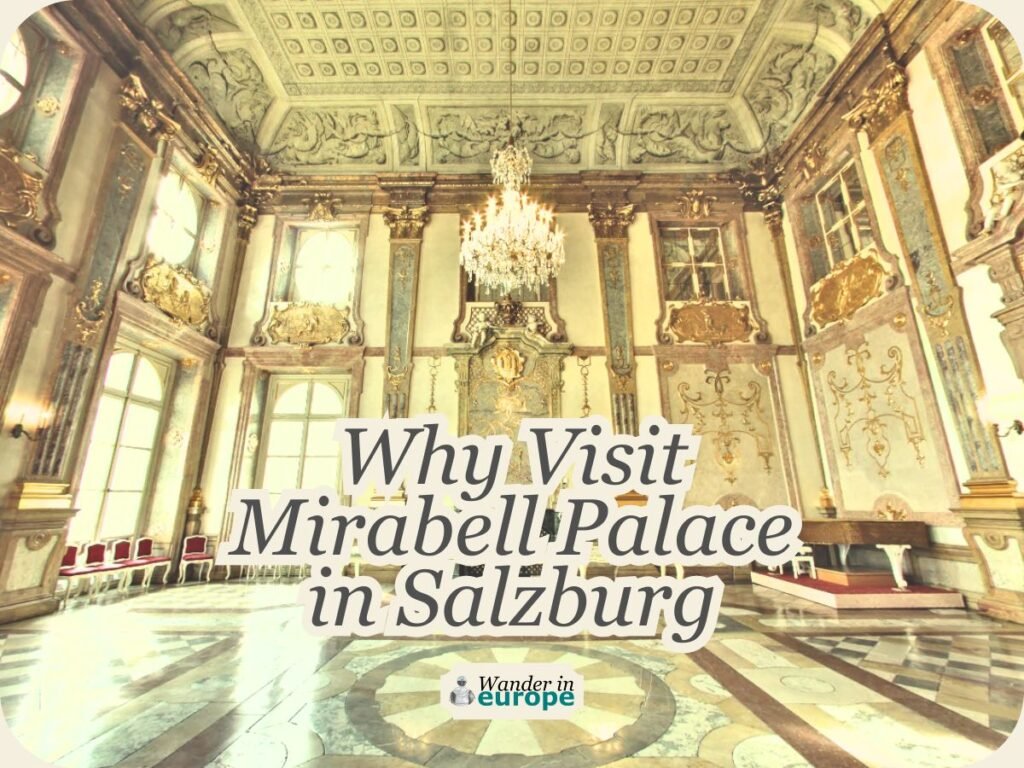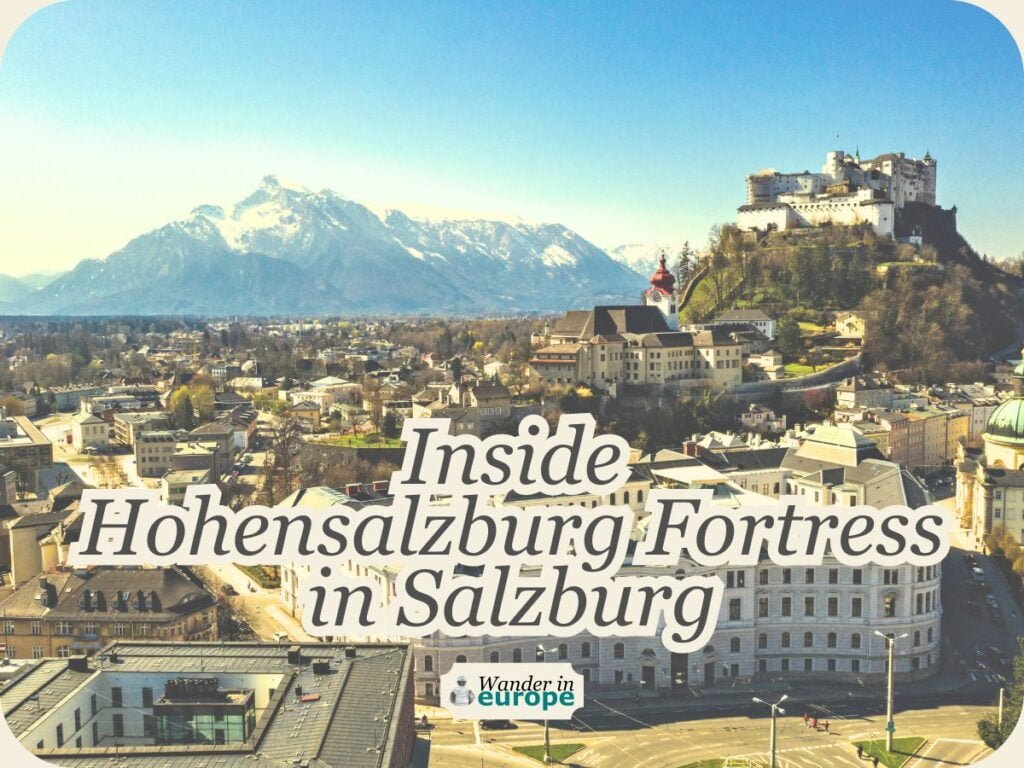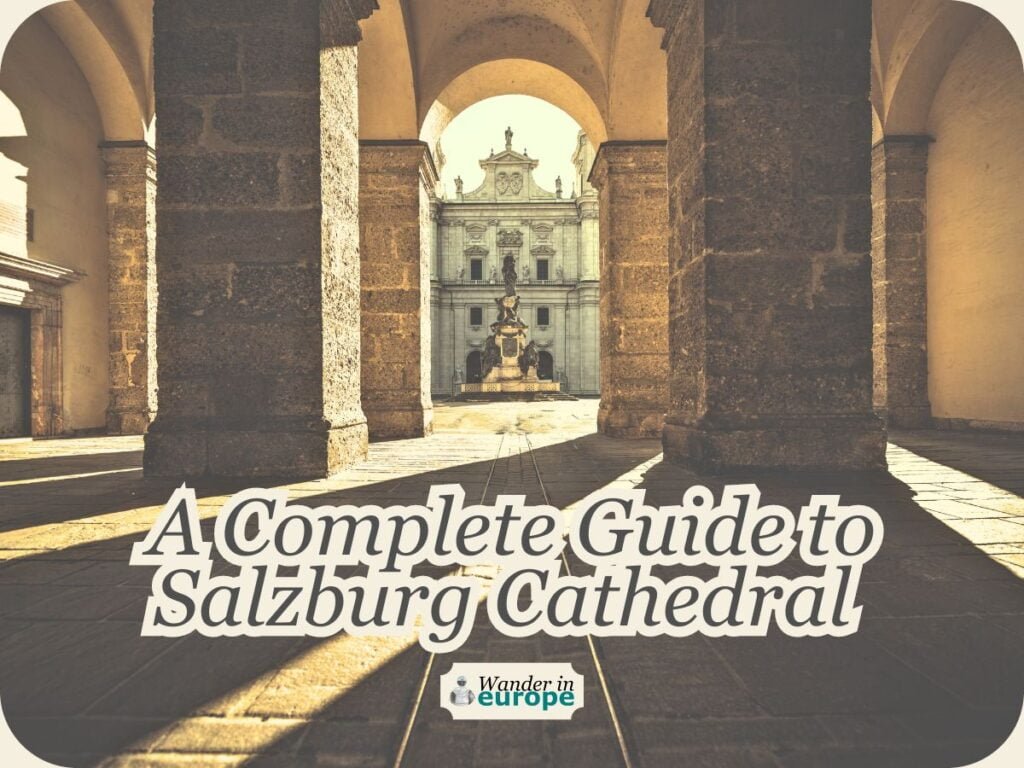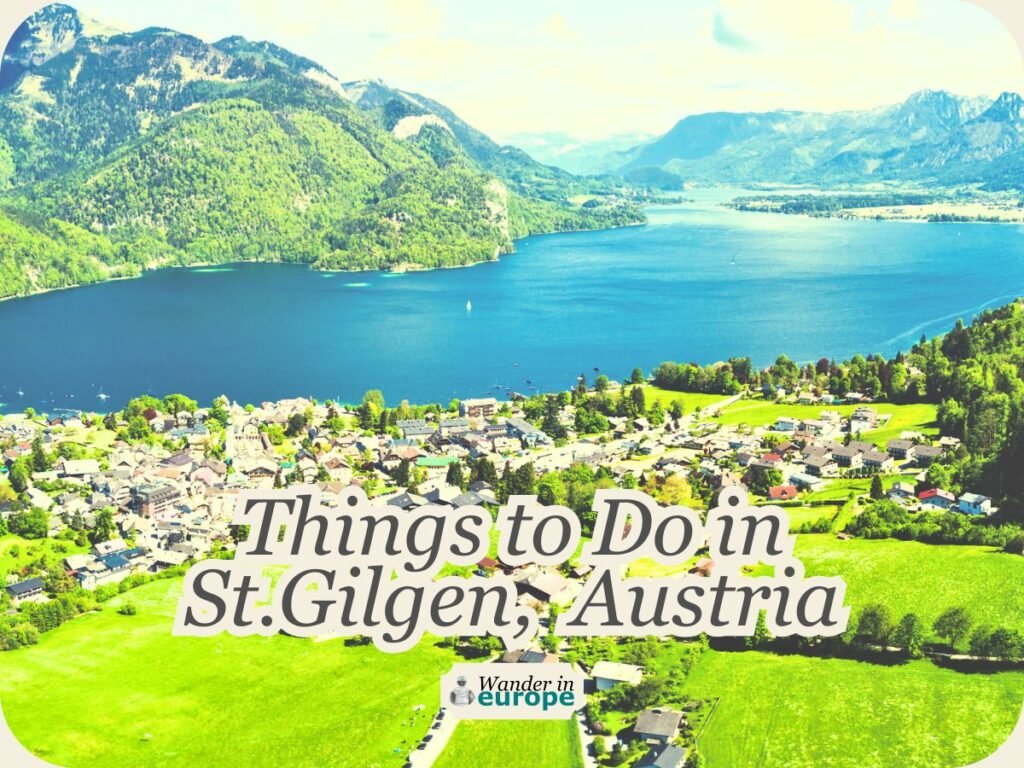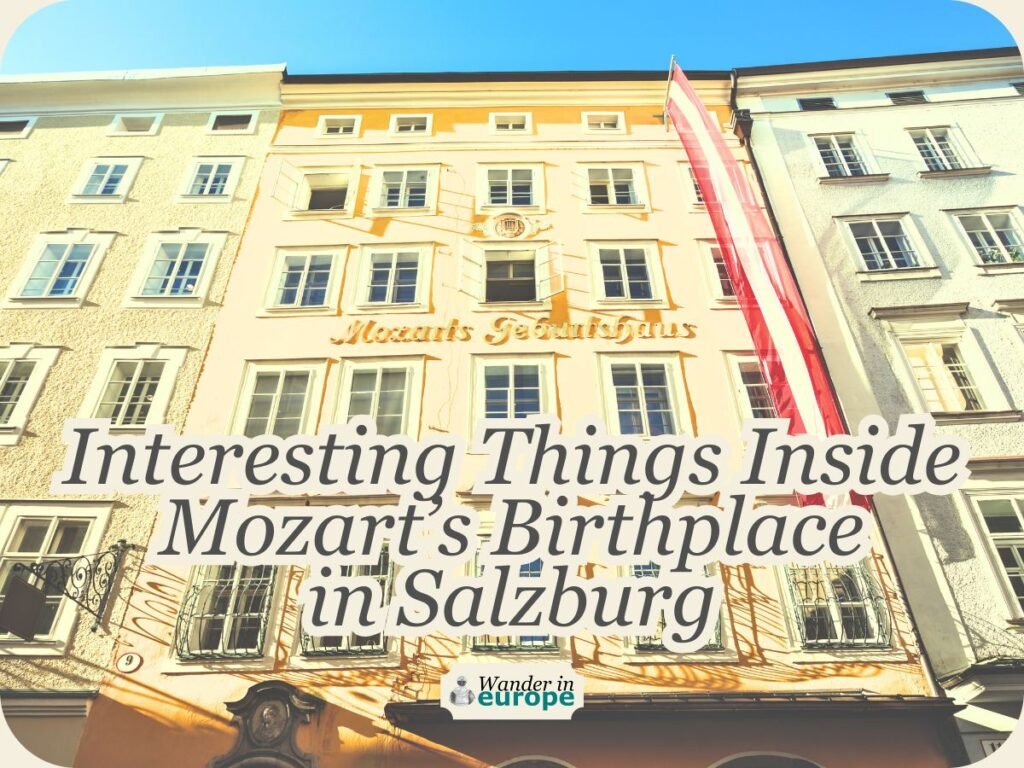Everything You Need to Know About Visiting Hellbrunn Palace
WanderInEurope is reader-supported. Affiliate links and ads help us keep creating useful content for you.
A glimpse to Hellbrunn Palace
Attractions and Features
Even though Hellbrunn Palace gets tons of visitors each year, it’s still a great spot to unwind after checking out the busy Old Town of Salzburg.
The garden is huge, so you’ll always find a place to chill and catch your breath. Just kick back by the garden ponds and watch the swans and fish do their thing. You’ll feel your exhaustion disappear.
In some parts of the garden, the only sound you’ll hear is the crunch of gravel under your feet as you stroll around. But, as you probably already know, there’s more to Hellbrunn Palace than just a nice walk around the grounds.
When you buy an entrance ticket, you get access to all the cool and beautiful parts of the palace. We’ll talk more about them below.

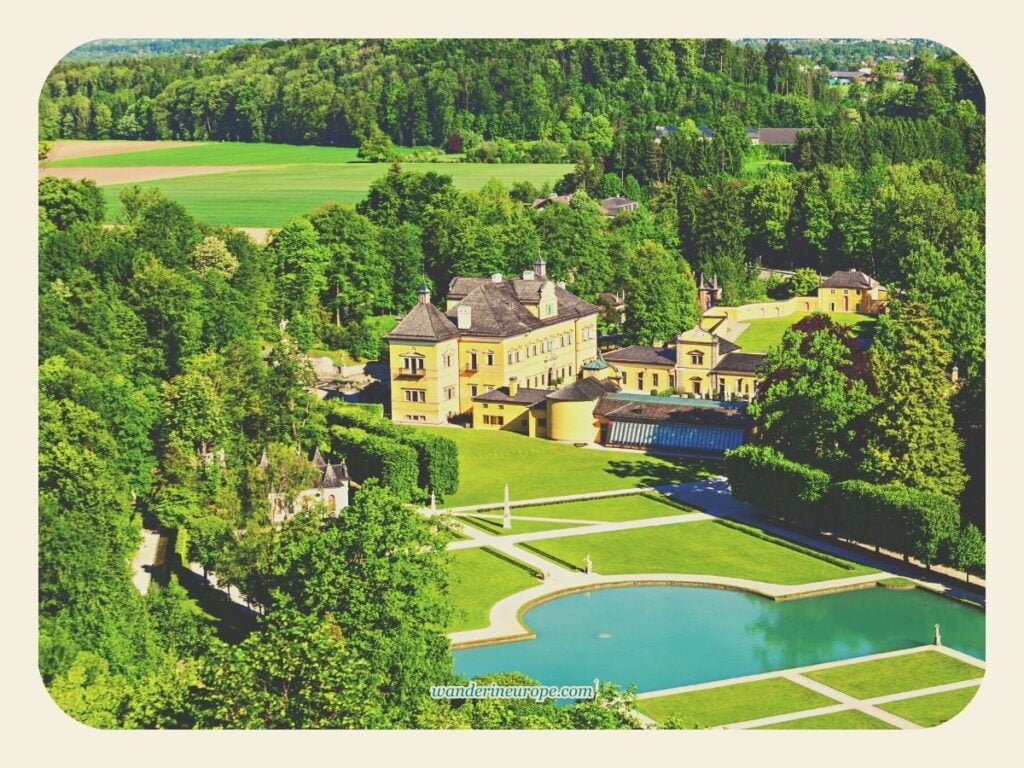

Explore this: Affordable Salzburg Experiences All Under $100 (opens in a new tab)
1. The Sound of Music Gazebo
Did you know that Hellbrunn Palace has a part that you can see in a movie?
It’s the gazebo in the palace garden and it was featured in the movie “The Sound of Music.” You can find it immediately after entering the garden, just a few steps from the main gate.
If you love “The Sound of Music,” the first thing you can do at Hellbrunn Palace is imagine the movie scenes. You can picture Liesl getting her first kiss in the gazebo while singing “16 going on 17.”


2. Trick Fountains
If you’re planning a visit to Hellbrunn Palace, I highly recommend dedicating a good portion of your time to exploring the Trick Fountains.
The Trick Fountains are the amazing features of the palace garden: water automats, grottos, and fountains that are both fascinating and entertaining.
They are the highlight of visiting Hellbrunn, alongside the exhibition inside the palace. They showcase the unique character of Hellbrunn Palace and offer unforgettable experiences that you won’t find anywhere else.



8 best trick fountains in Hellbrunn Palace
3. Palace Exhibitions
Although Hellbrunn Palace may not appear as grand as other European palaces, it has artistic features that will truly amaze you.
So, even if you have limited time or feel satisfied with the experience after seeing the Trick Fountains, make sure to tour the Palace. (especially since it’s included in the tickets you’ll be buying to enter!)

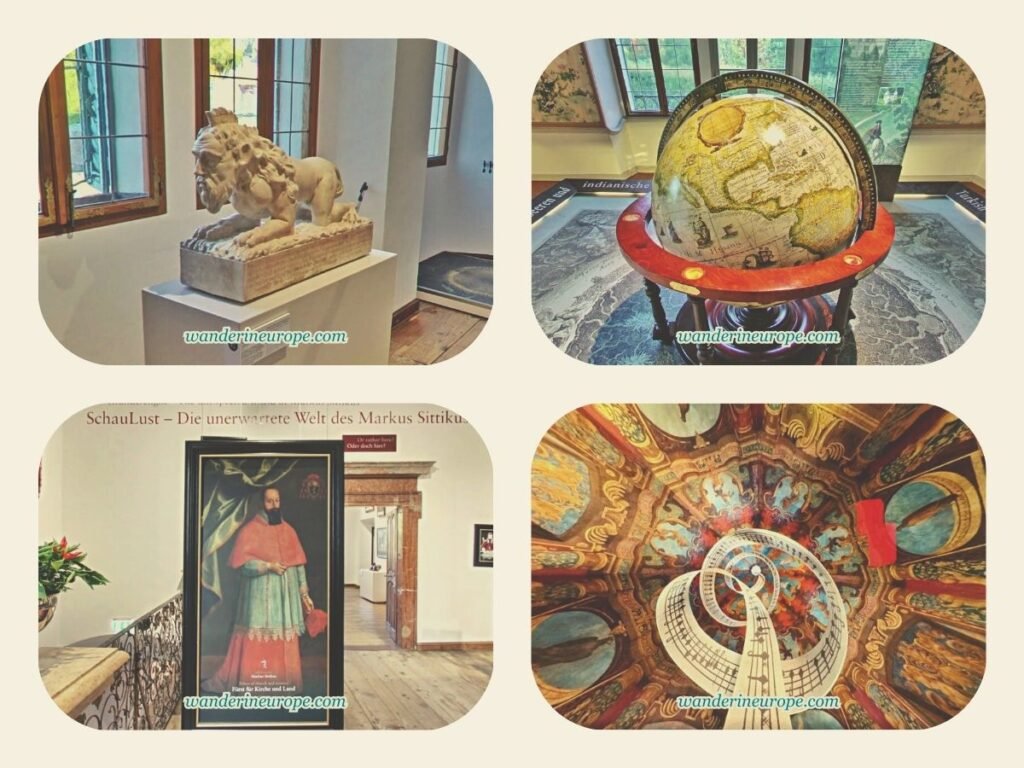


8 Parts of Palace Exhibitions in Hellbrunn Palace
4. The Little Month Palace
Wandering in the Hellbrunn garden, I’m more than sure that you’ll notice the lone building perched on a hilltop, overlooking the entire Hellbrunn estate. That building is the Little Month Palace.
And interestingly, it got its name from the rumors and legend that it was constructed in only one month. Would you believe that?
Anyway, today, the Little Month Palace houses the Folklore Museum, which you’ll have access to when you purchase an entry ticket to the palace.


5. Stone Theater
If you like going off-the-beaten-path, the Stone Theater is another place to be in Hellbrunn. It is located at the same hill where you can find Little Month Palace.
And nestled in the forest and surrounded by nature, the Stone Theater in Hellbrunn is a hidden gem.

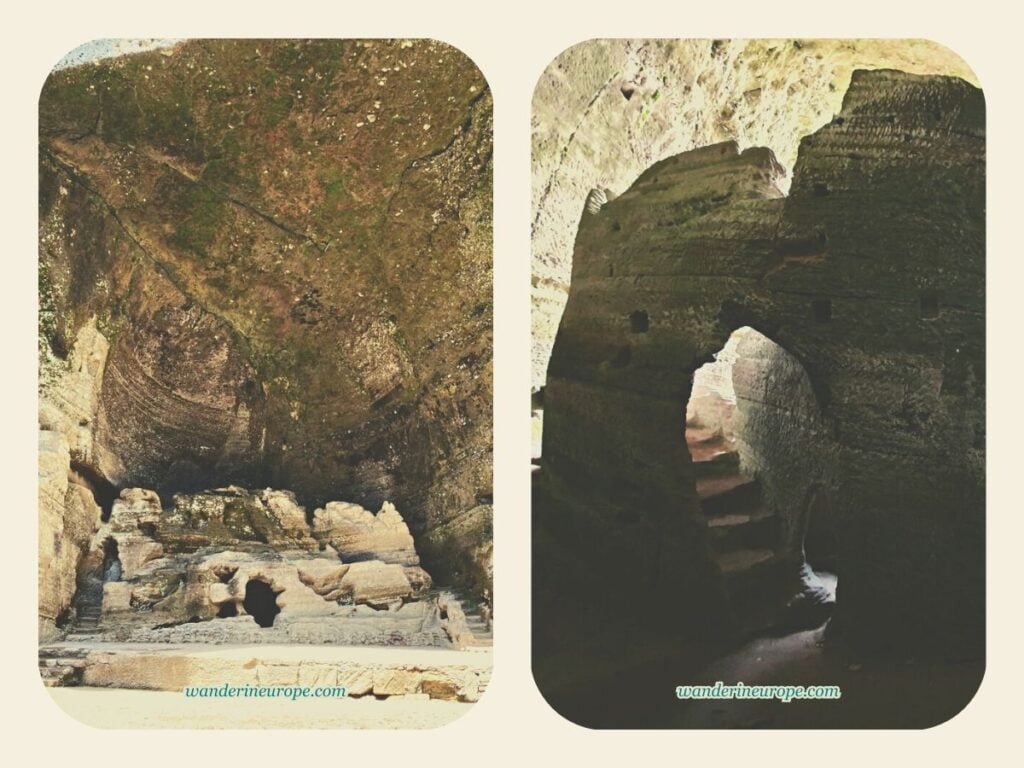

Map of Hellbrunn Palace
To help you explore Hellbrunn Palace, here’s the map indicating the location of each point of interest in Hellbrunn Palace.

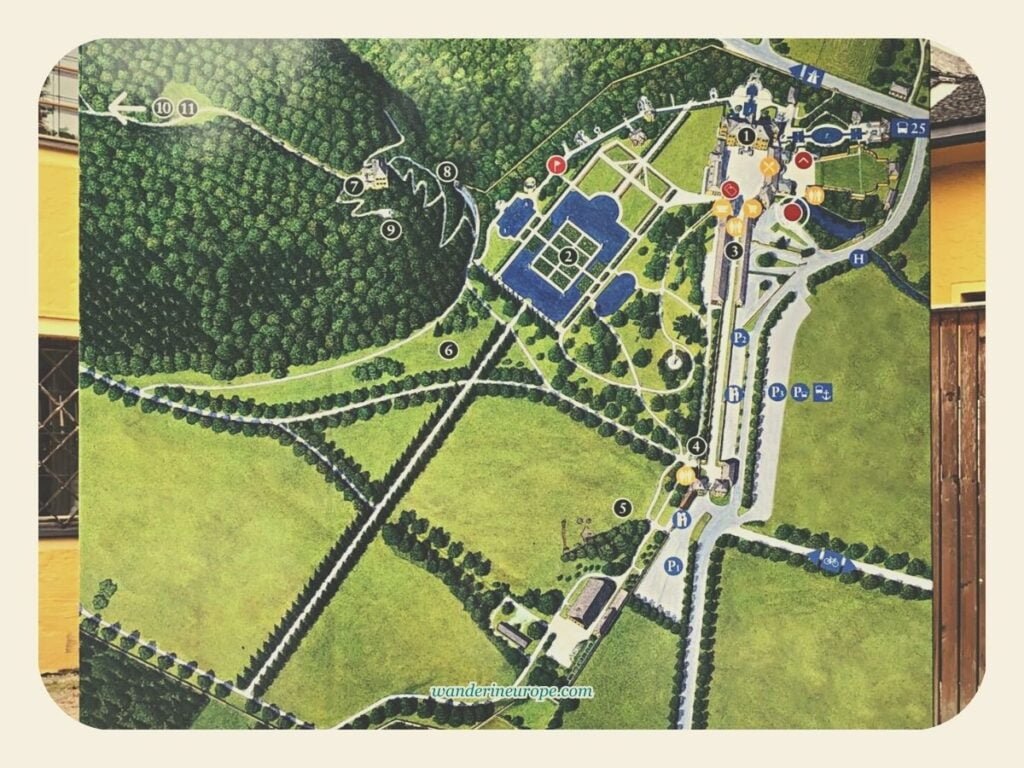

Visiting Information
If you’re planning a visit to the beautiful Hellbrunn Palace and Trick Fountains, it’s important to know that it is open daily from Spring to Autumn. The opening hours vary depending on the month, so be sure to plan accordingly:
- March (usually last week) to April: 09:30 am – 5:30 pm (Last admission is 4:30 pm)
- May to June: 09:30 am – 6:30 pm (Last admission is 5:30 pm)
- July to August: 09:30 am – 7:00 pm (Last admission is 6:00 pm)
- September: 09:30 am – 6:30 pm (Last admission is 5:30 pm)
- October to November (usually first week): 09:30 am – 5:30 pm (Last admission is 4:30 pm)
Please check the official website of Hellbrunn Palace for the exact start and end date of the visiting season, and announcements for the changes in schedule.
If you’re looking for a peaceful and serene experience at Hellbrunn Palace, you may visit early in the morning. The palace garden is open daily (all year round) from 6:30 am (until 9:00 pm), providing ample opportunity to relax, connect with nature, and take beautiful photos without any distractions.

Pin this to save it for later or bookmark it to read anytime.

Resources
So, that’s all that I can share with you about Hellbrunn Palace. If you have more questions and you want to learn more about the Hellbrunn Palace and Folklore Museum, please refer to the links below.
- Official website of Hellbrunn Palace
- Official website of Salzburg Museum (Folklore Museum)
- Youtube: Salzburg Carnival
- Youtube: Trick Fountains explainer video

Explore more amazing destinations in Salzburg and find guides to help you get the most out of your trip!
Guides & Itineraries
Lists & New Ideas
Top Attractions
Make your trip even more fun and hassle-free.
Plan Your Trip Now
WanderInEurope partners with trusted companies to make your trip unforgettable.
Support WanderInEurope by using my recommended services above. The links are affiliate links, which means I earn a small commission when you make a purchase—at no extra cost to you. It’s like giving a free donation to help WanderInEurope keep creating helpful travel guides. Thanks for your support!

